Tools Required
| • | J 42385-100 Head/Main Bolt Thread Repair Kit |
| • | J 42385-200 Common Thread Repair Kit |
| • | J 42385-300 Fixtures and Hardware Kit |
General Thread Repair
- The thread repair process involves a solid, thin walled, self-locking, carbon steel, bushing type insert (1). During the bushing installation process, the driver tool expands the bottom external threads of the insert into the base material (2). This action mechanically locks the insert in place. Also, when installed to the correct depth, the flange of the insert will be seated against the counterbore of the repaired hole.
- Drill out the threads of the damaged hole (1).
- Using compressed air, clean out any chips.
- Using compressed air, clean out any chips.
- Counterbore the drilled hole to the full depth permitted by the tool (1).
- Using compressed air, clean out any chips.
- Using a suitable tapping wrench, tap the threads of the drilled hole by hand only.
- Using compressed air, clean out any chips.
- Spray a commercially available thread cleaner into the tapped hole.
- Using compressed air, clean out any chips.
- Lubricate the threads of the driver installation tool (2) with the driver oil (1).
- Install the insert (2) onto the driver installation tool (1).
- Apply threadlock sealant LOCTITE 277® or equivalent (1) to the insert OD threads (2).
- Install the insert (1) into the tapped hole by hand only.
- Inspect the insert for correct installation into the hole.
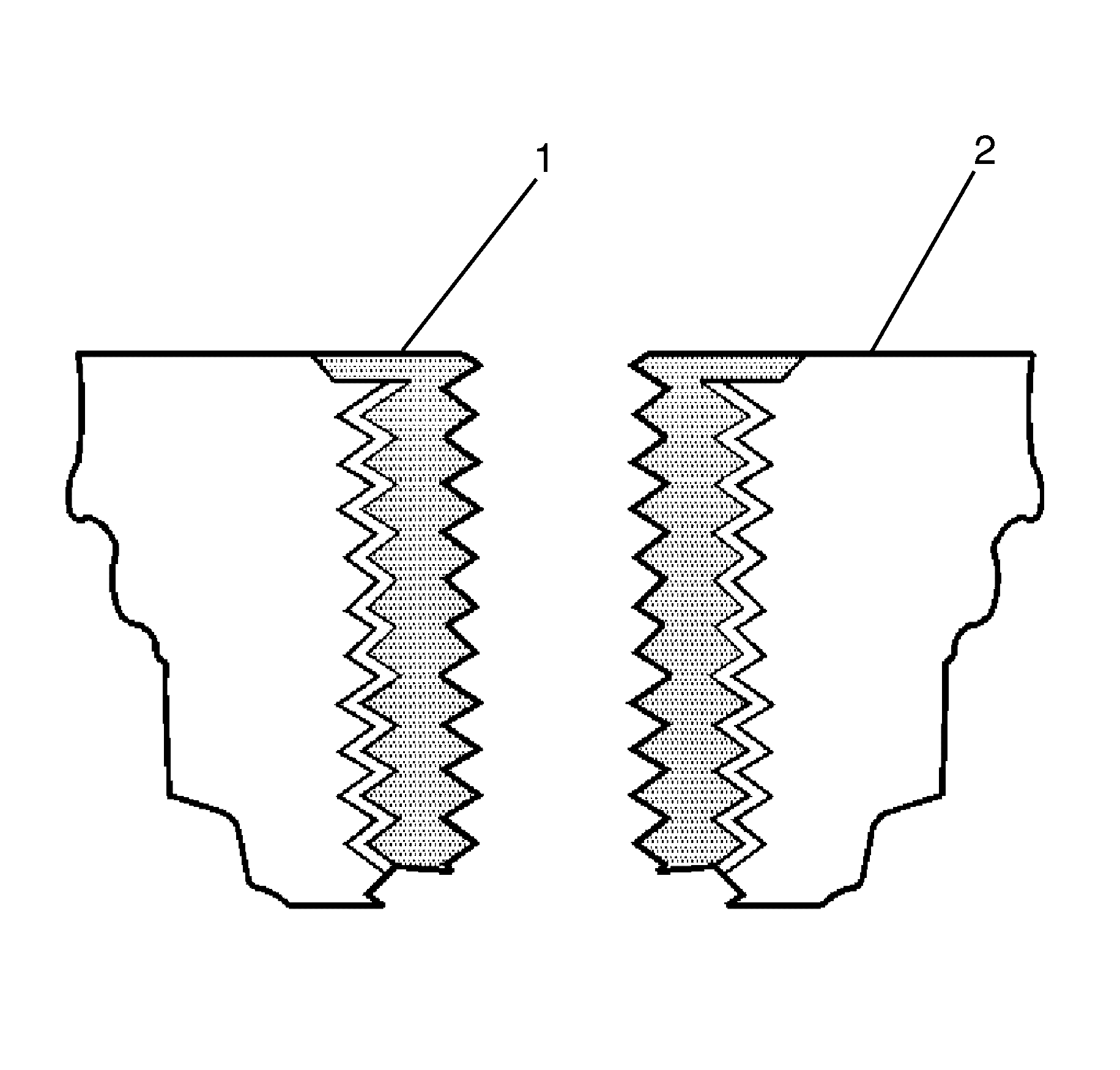
Caution: Refer to Safety Glasses Caution in the Preface section.

Important:
• The use of a cutting type fluid WD 40®, or equivalent, is recommended
when performing the drilling, counterboring, and tapping procedures. • Driver oil MUST be used on the installer driver tool. • The tool kits are designed for use with either a suitable tap wrench or
drill motor.
| • | M6 inserts require a minimum drill depth of 15 mm (0.59 in). |
| • | M8 inserts require a minimum drill depth of 20 mm (0.79 in). |
| • | M10 inserts require a minimum drill depth of 23.5 mm (0.93 in). |
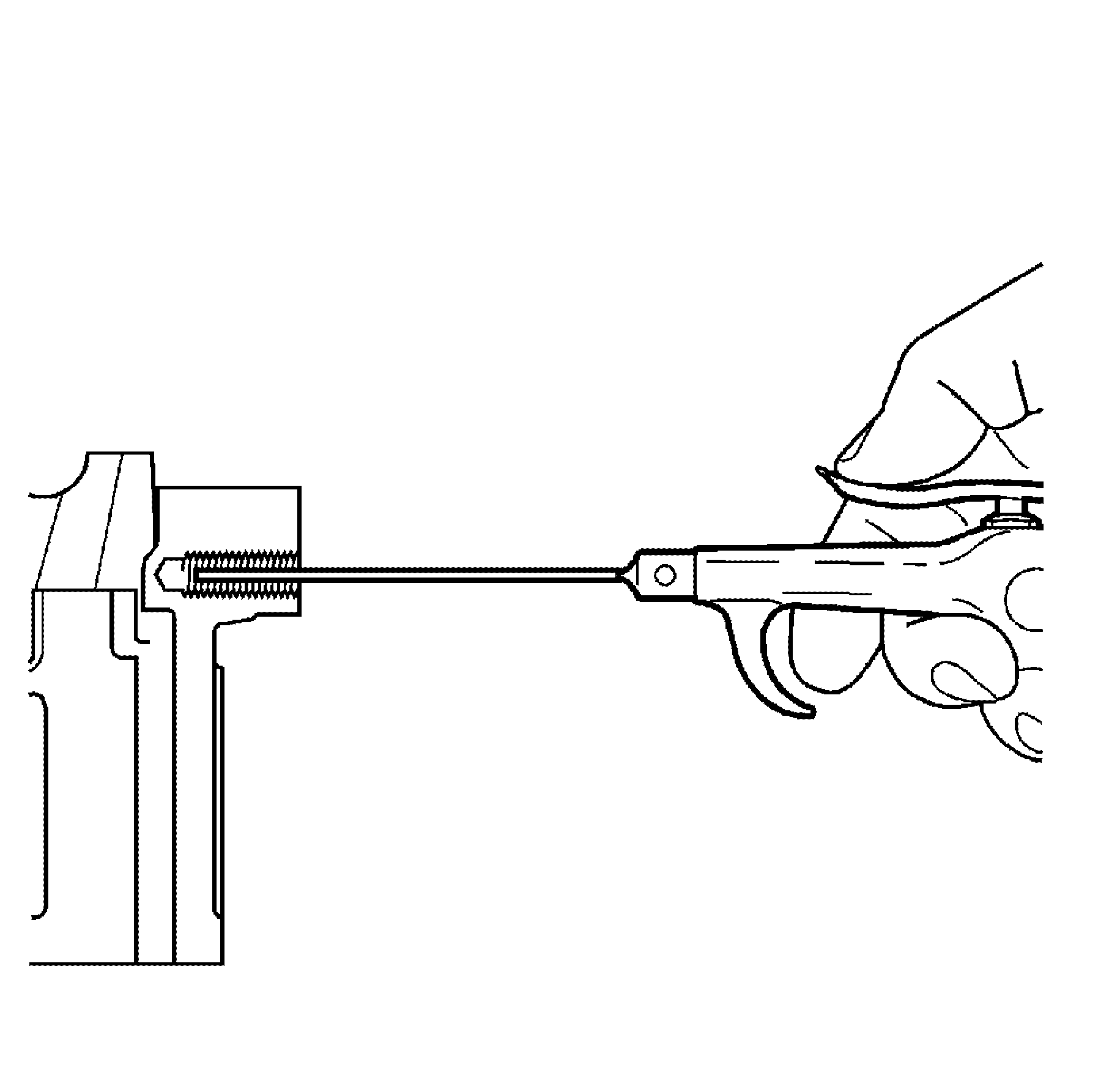
Important: All chips must be removed from the drilled hole prior to tapping.

Important: A correctly counterbored hole will show a slight burnishing on the surface of the base material for 360 degrees around the drilled hole.

Important: All chips must be removed from the drilled hole prior to tapping.
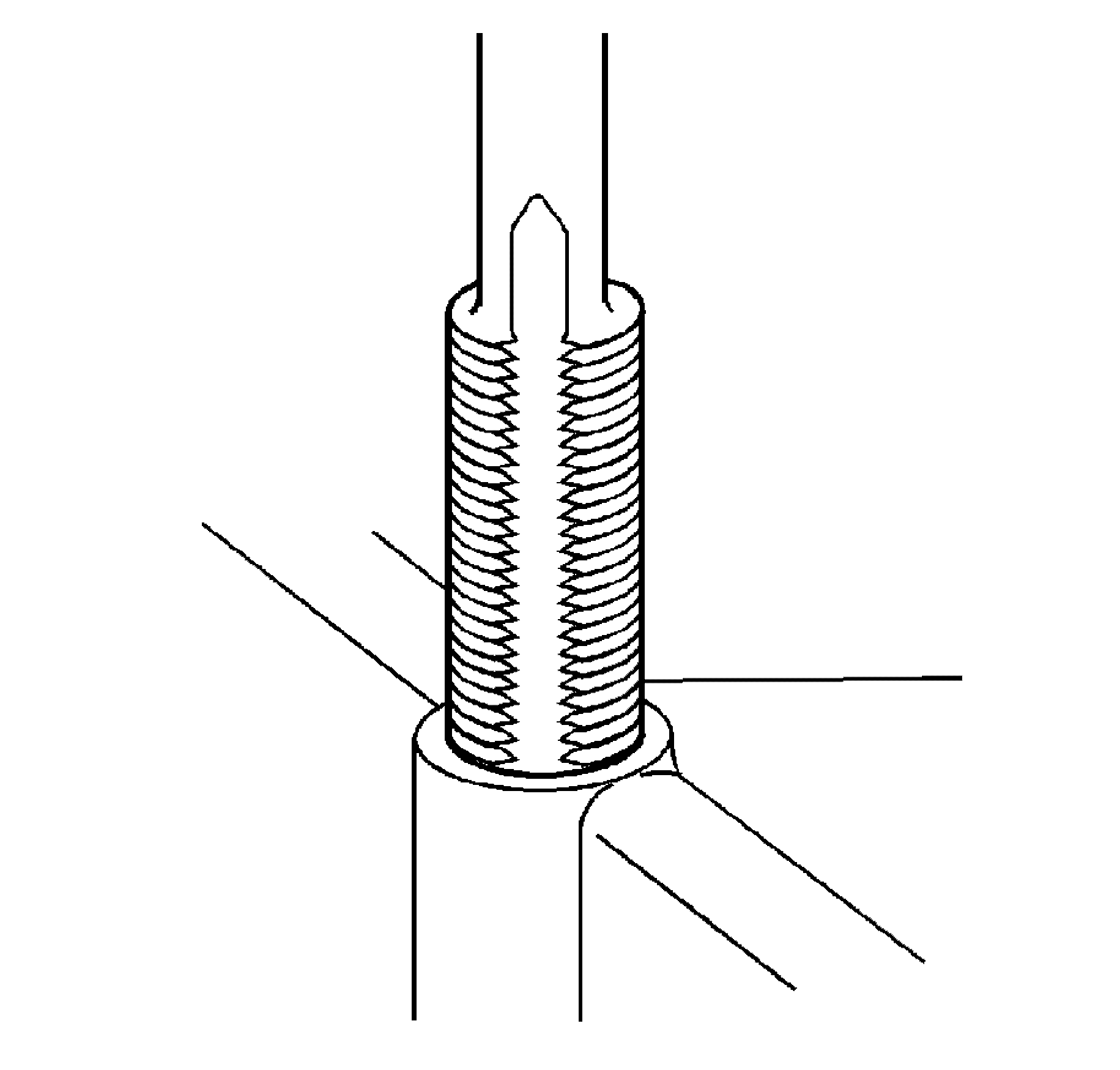
Important:
• During the tapping process, it is necessary to repeatedly remove the tap
and clean chips from the hole and the flutes of the tap. • Make sure the tap has created full threads at least to the depth equal
to the insert length.
Specifications
| • | M6 inserts require a minimum tap depth of 15 mm (0.59 in). |
| • | M8 inserts require a minimum tap depth of 20 mm (0.79 in). |
| • | M10 inserts require a minimum tap depth of 23.5 mm (0.93 in). |

Important: All chips must be removed from the tapped hole prior to insert installation.
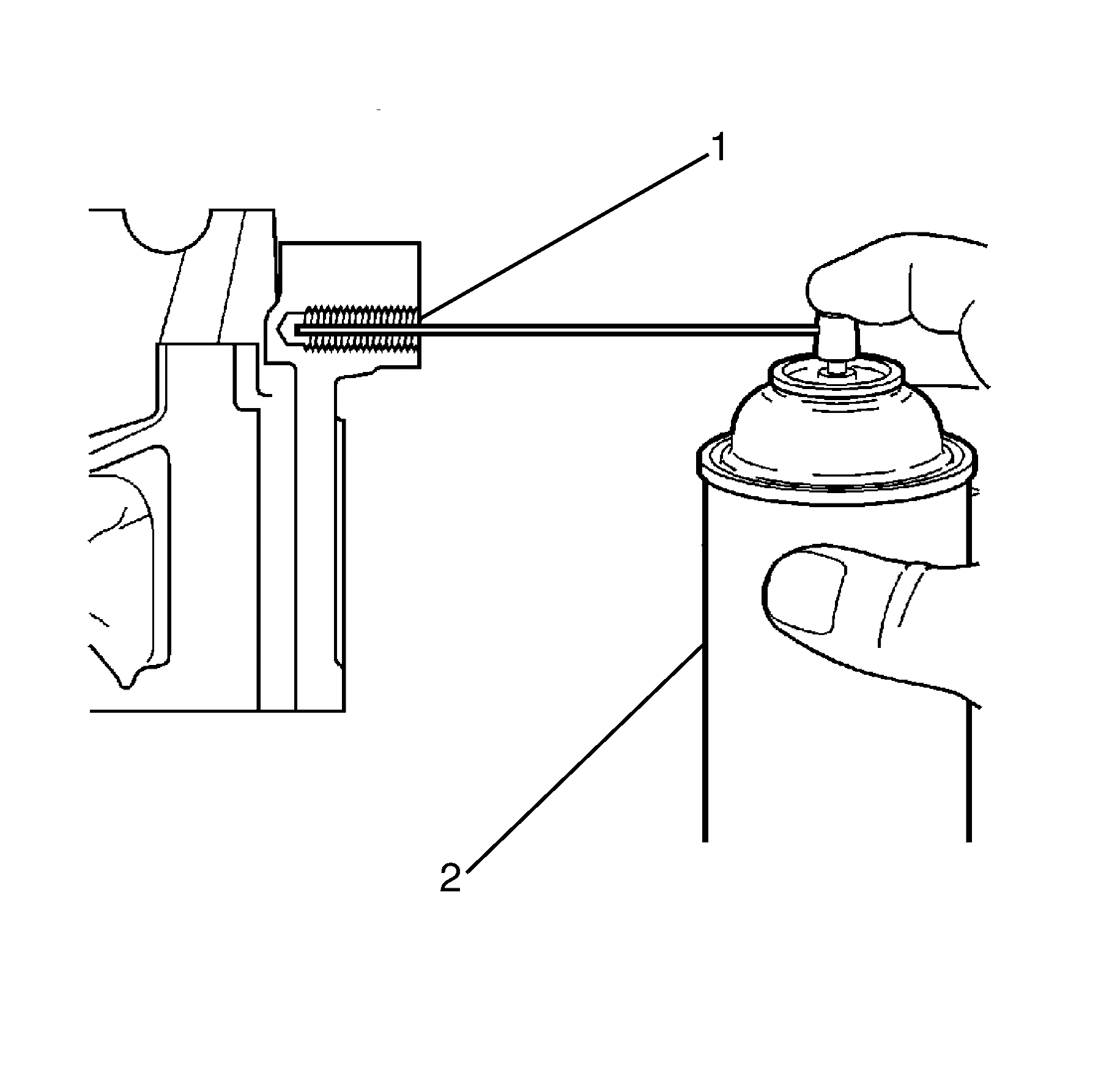

Important: All chips must be removed from the tapped hole prior to insert installation.
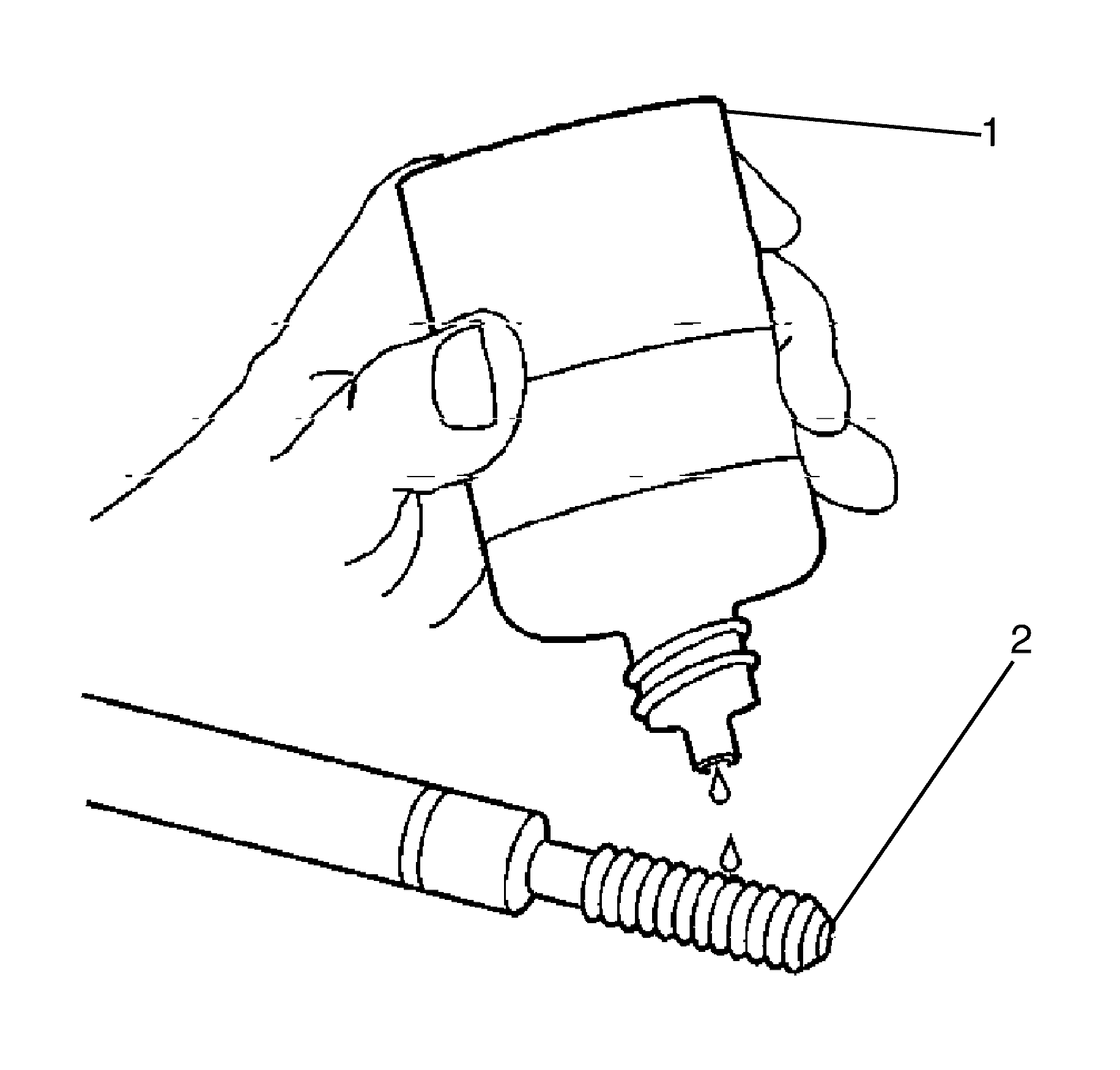
Important: Do not allow oil or other foreign material to contact the outside diameter (OD) of the insert.

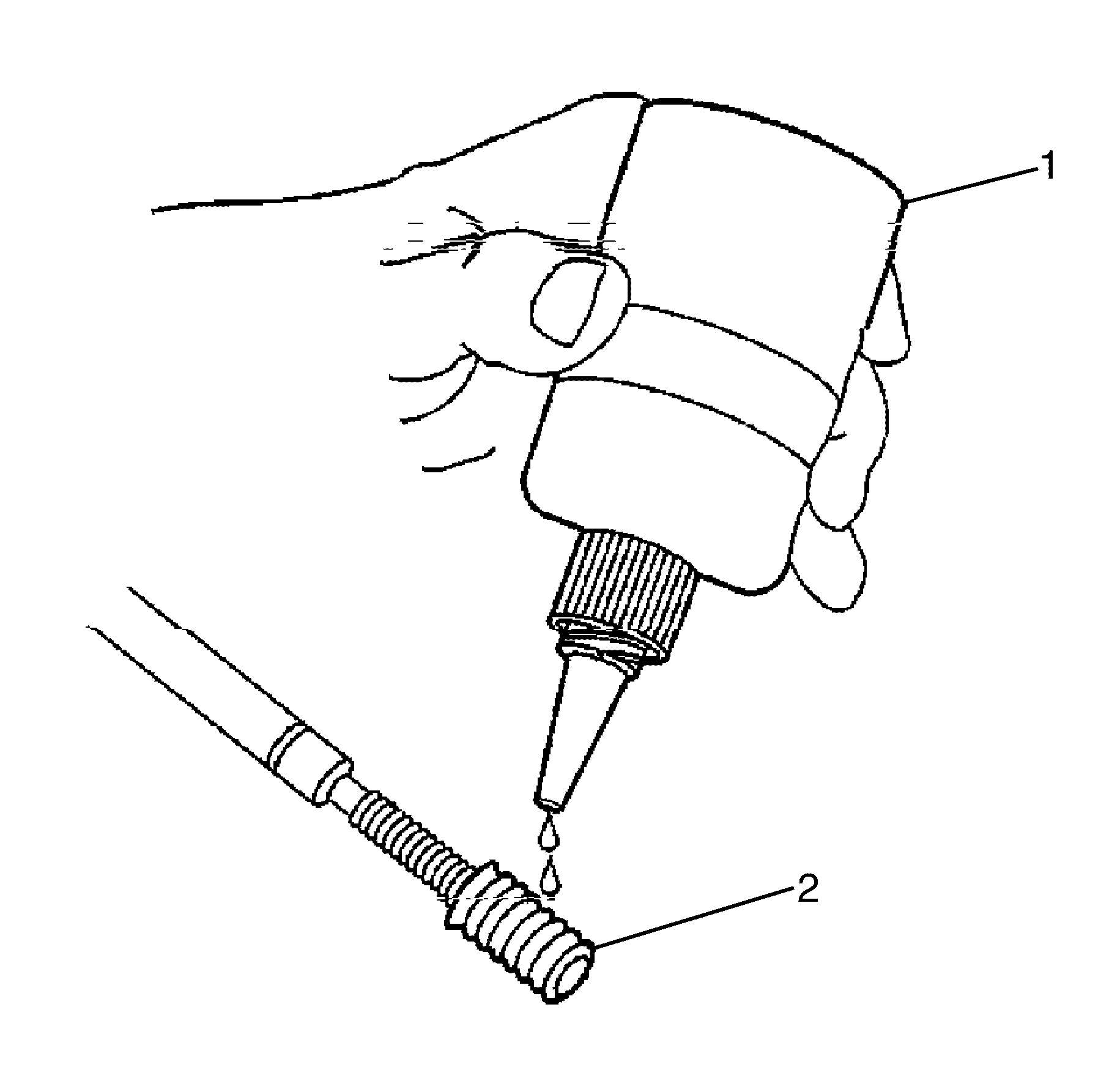
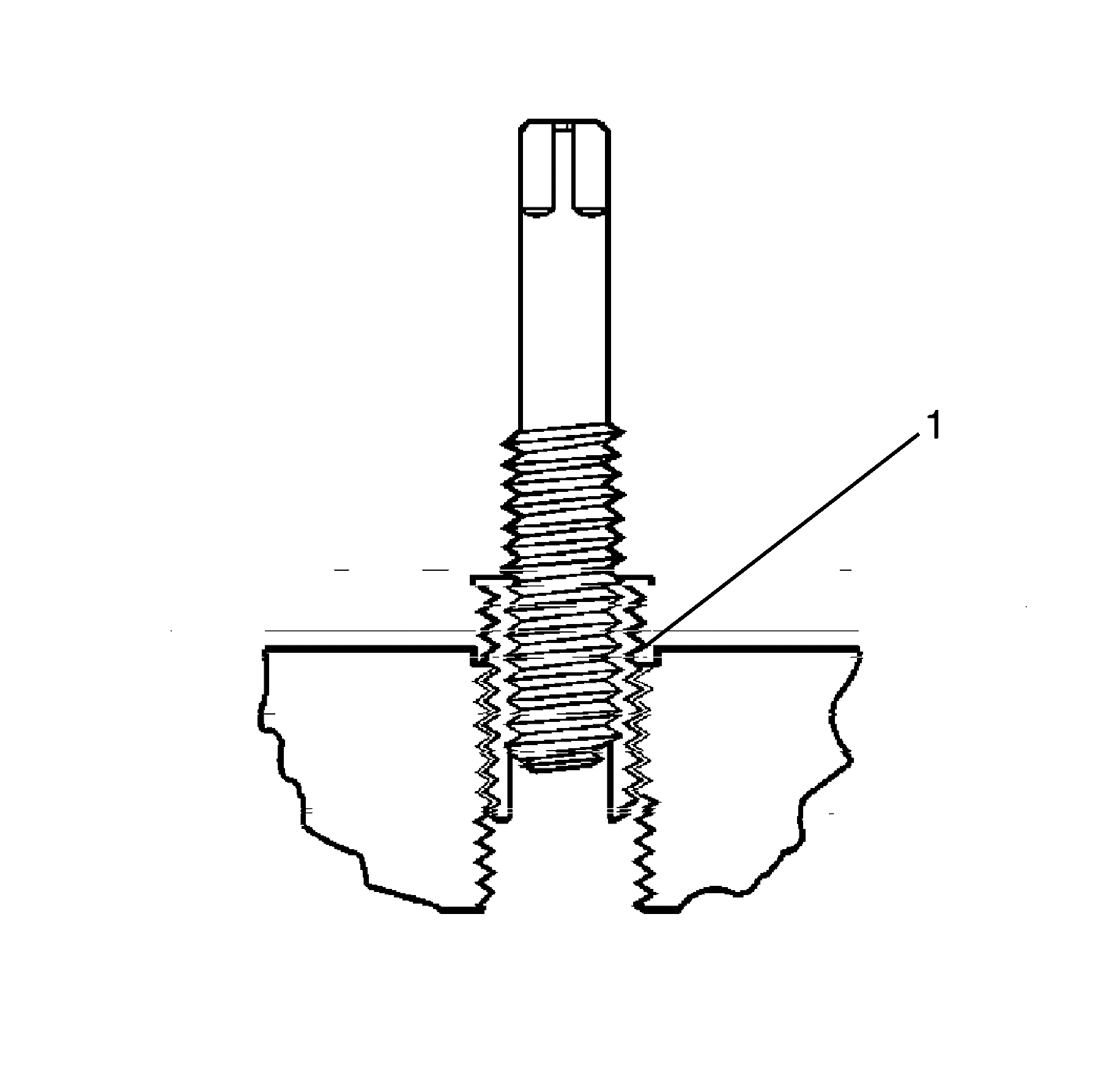
Install the insert until the flange of the insert contacts the counterbored surface. Continue to rotate the installer tool (1) through the insert.
The installer tool will tighten up before screwing completely through the insert. This is acceptable. You are forming the bottom threads of the insert and mechanically locking the insert to the base material threads.

A correctly installed insert (1) will be either flush or slightly below flush with the surface of the base material (2).
Recessed Thread Repair
- Install a stop collar (2) on the counterbore drill (1), if required.
- Drill out the threads of the damaged hole.
- Using compressed air, clean out any chips.
- Using a suitable tapping wrench, tap the threads of the drilled hole by hand only.
- Using compressed air, clean out any chips.
- Spray a commercially available thread cleaner into the tapped hole.
- Using compressed air, clean out any chips.
- Lubricate the threads of the driver installation tool (2) with the driver oil (1).
- Install the insert (2) onto the driver installation tool (1).
- Apply threadlock sealant LOCTITE 277® or equivalent (1) to the insert OD threads (2).
- Install the insert (1) into the tapped hole by hand only.
- Install the insert until the flange (1) of the insert contacts the counterbored surface.
- Continue to rotate the driver installation tool (1) through the insert (2).
- Inspect the insert (1) for correct installation (2) into the tapped hole.
- Any installed insert that restricts or blocks an oil or engine coolant passage (3) will need to have the oil or engine coolant passage drilled out (4) to the original size of the oil or engine coolant passage. After drilling the restriction or blockage, clean out any chips and thread the installation driver tool through the insert again to remove any burrs caused by the drilling of the oil or engine coolant passage.
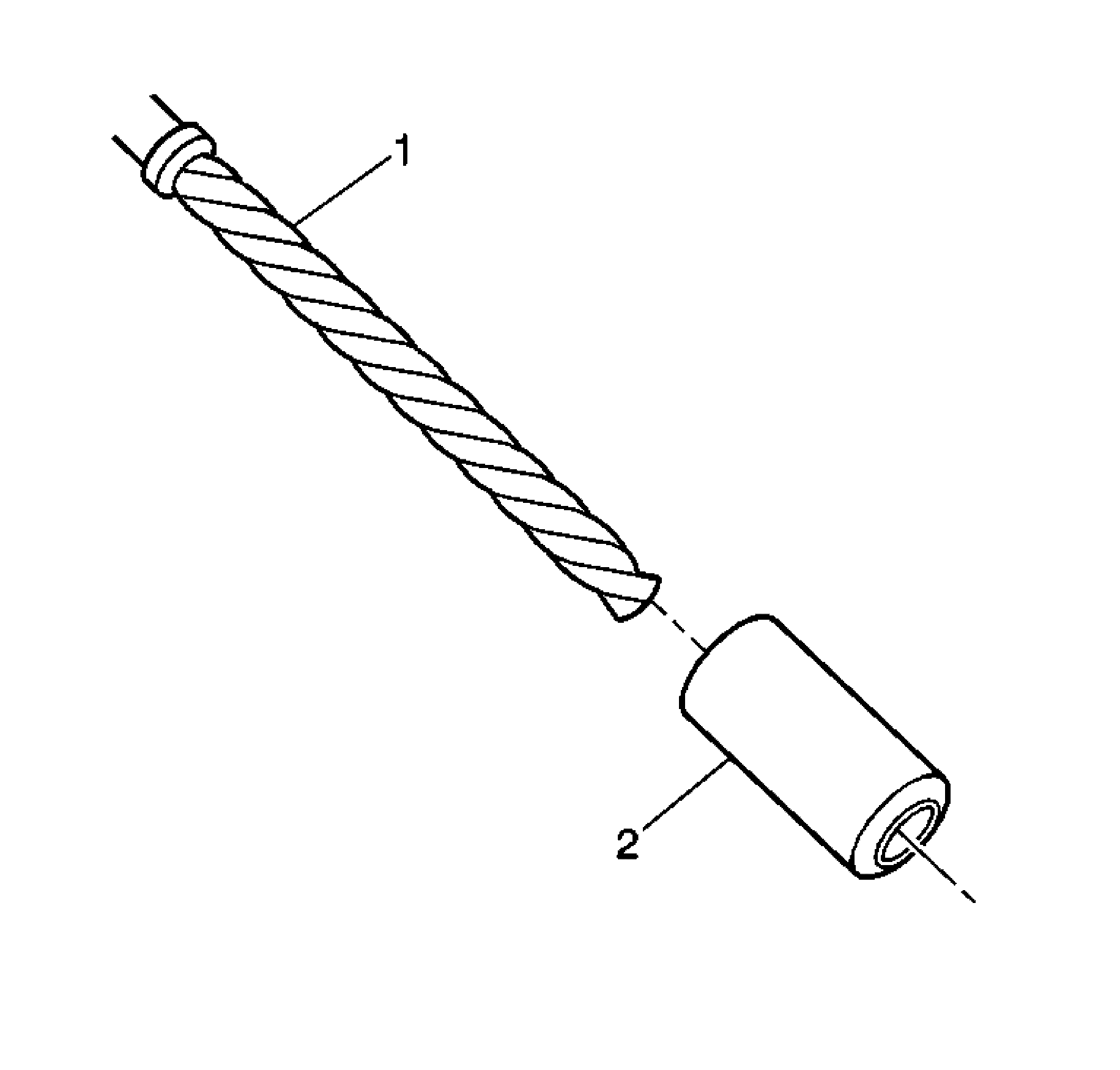

Important:
• During the drilling process, it is necessary to repeatedly remove the
drill and clean chips from the hole and the flutes of the drill. • Drill the hole until the stop collar contacts the surface of the base
material.

Important: All chips must be removed from the drilled hole prior to tapping.

Important:
• During the tapping process, it is necessary to repeatedly remove the tap
and clean chips from the hole and the flutes of the tap. • Make sure the tap has created full threads at least to the depth equal
to the insert length.

Important: All chips must be removed from the tapped hole prior to insert installation.


Important: All chips must be removed from the tapped hole prior to insert installation.

Important: Do not allow oil or other foreign material to contact the outside diameter (OD) of the insert.


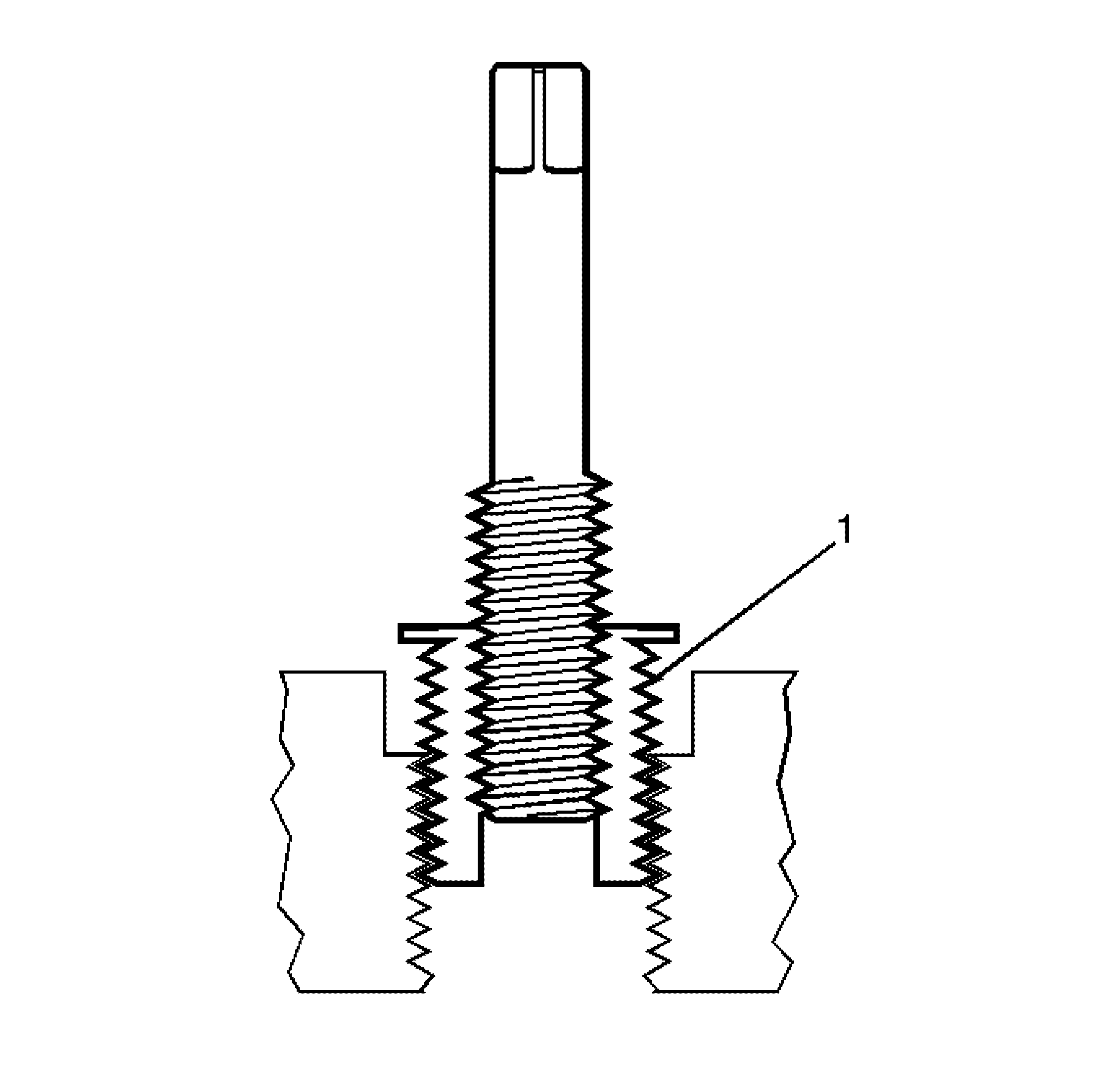
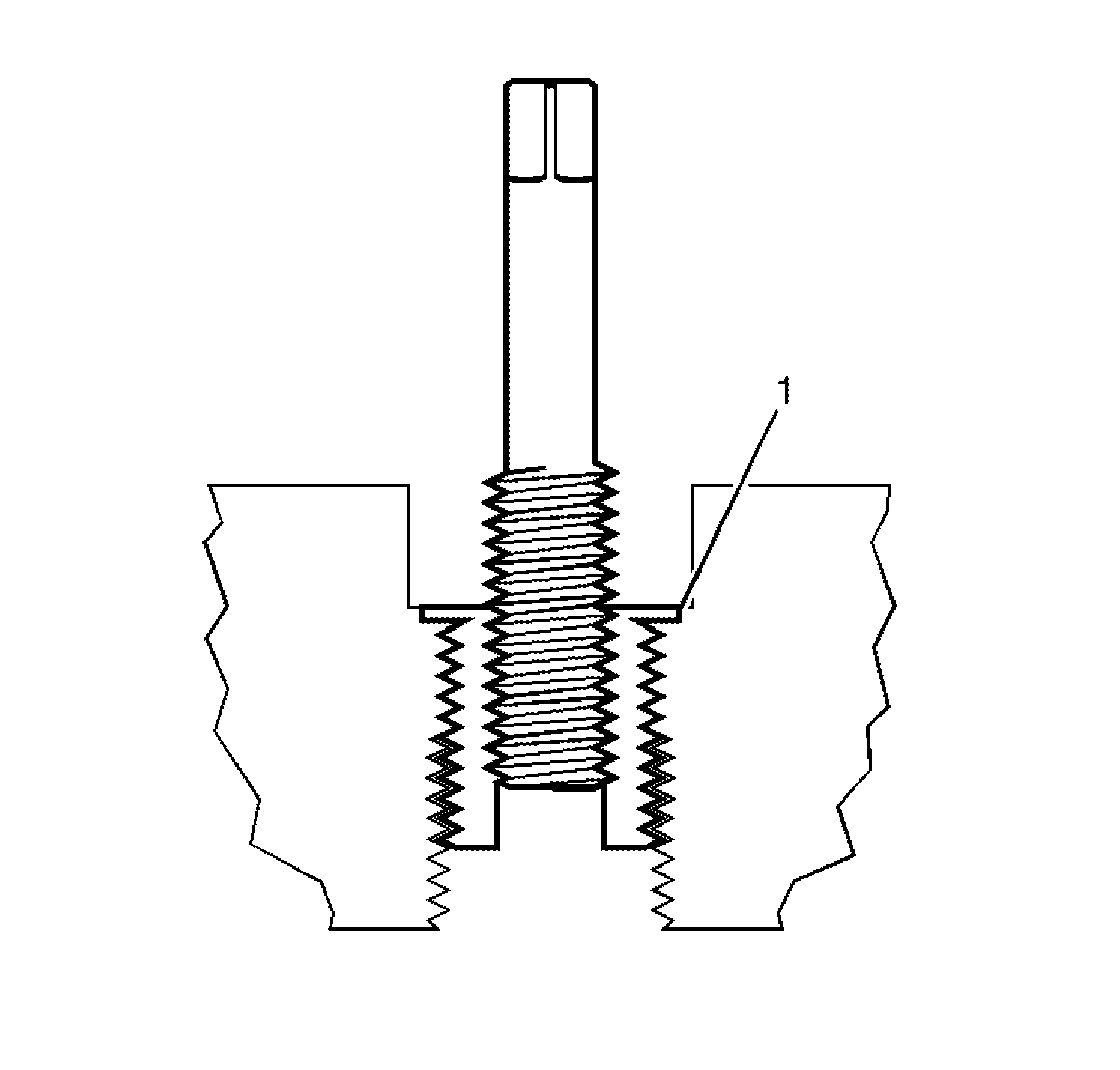
Important: If the insert will not thread down until the flange contacts the counterbored surface remove the insert immediately with a screw extracting tool and inspect the tapped hole for any remaining chips and/or incorrect tapping.
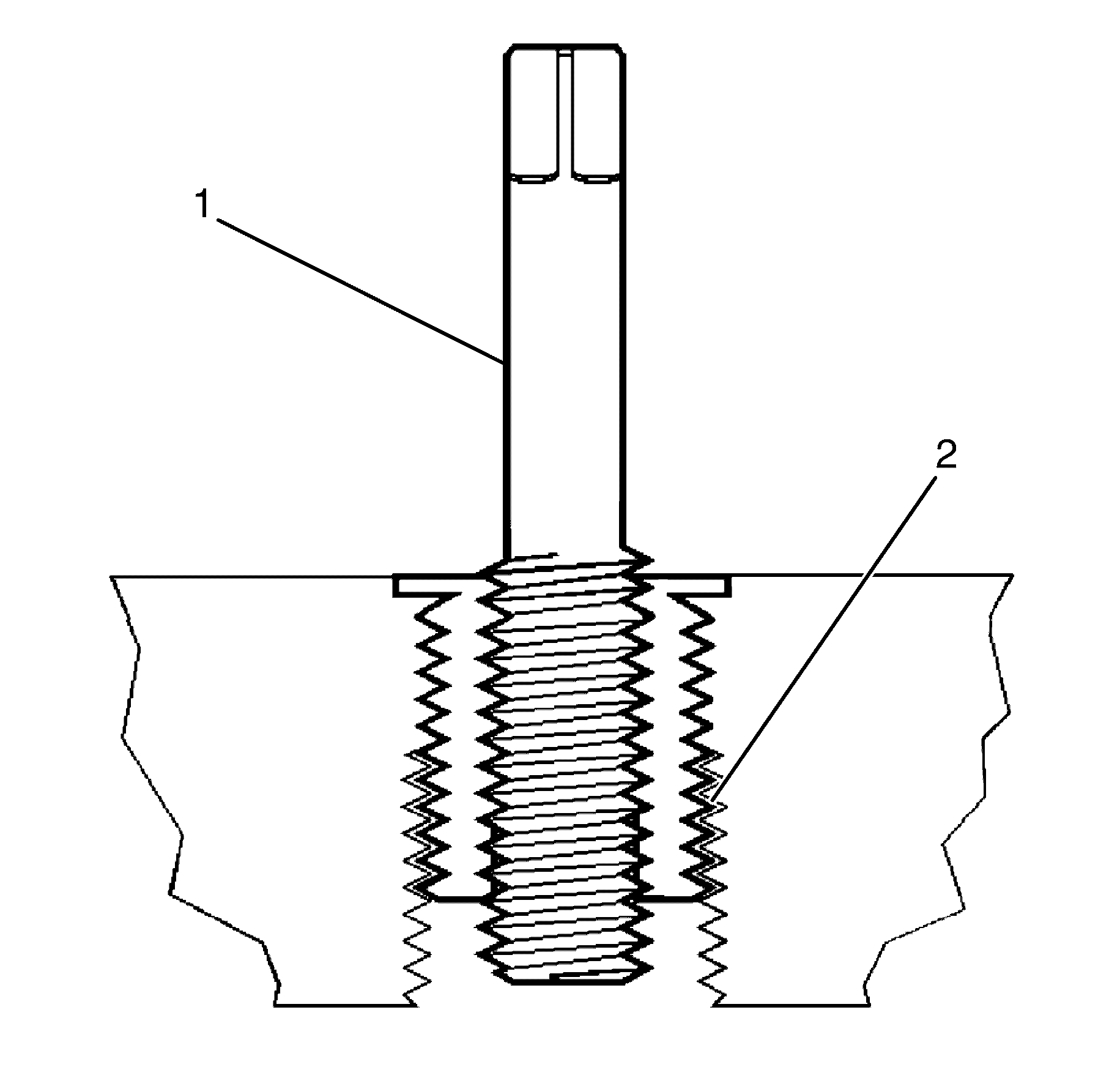
Important: The driver installation tool will tighten up before screwing completely through the insert. This is acceptable. The threads at the bottom of the insert are being formed and the insert is mechanically locking the insert into the base material threads.
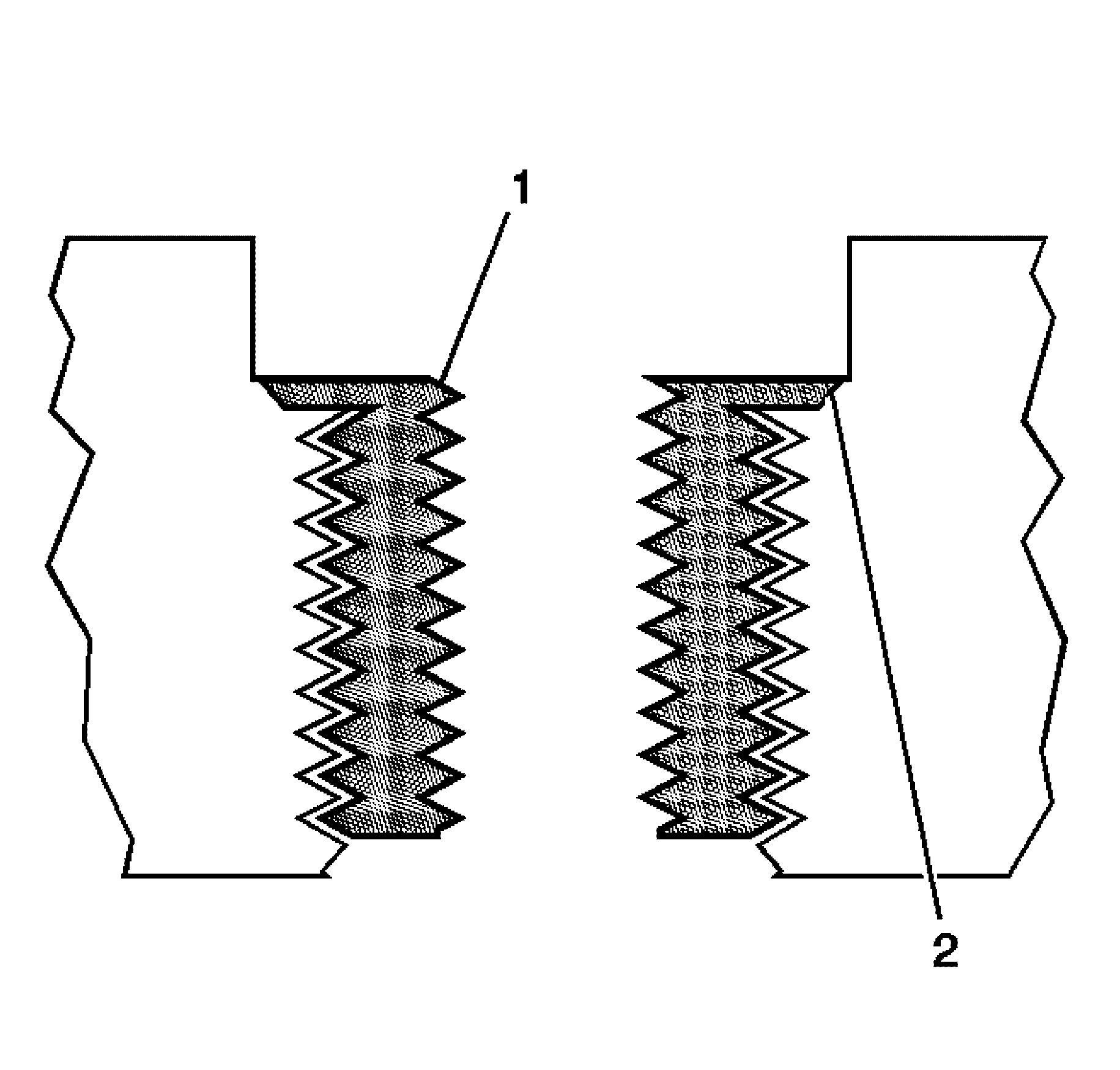
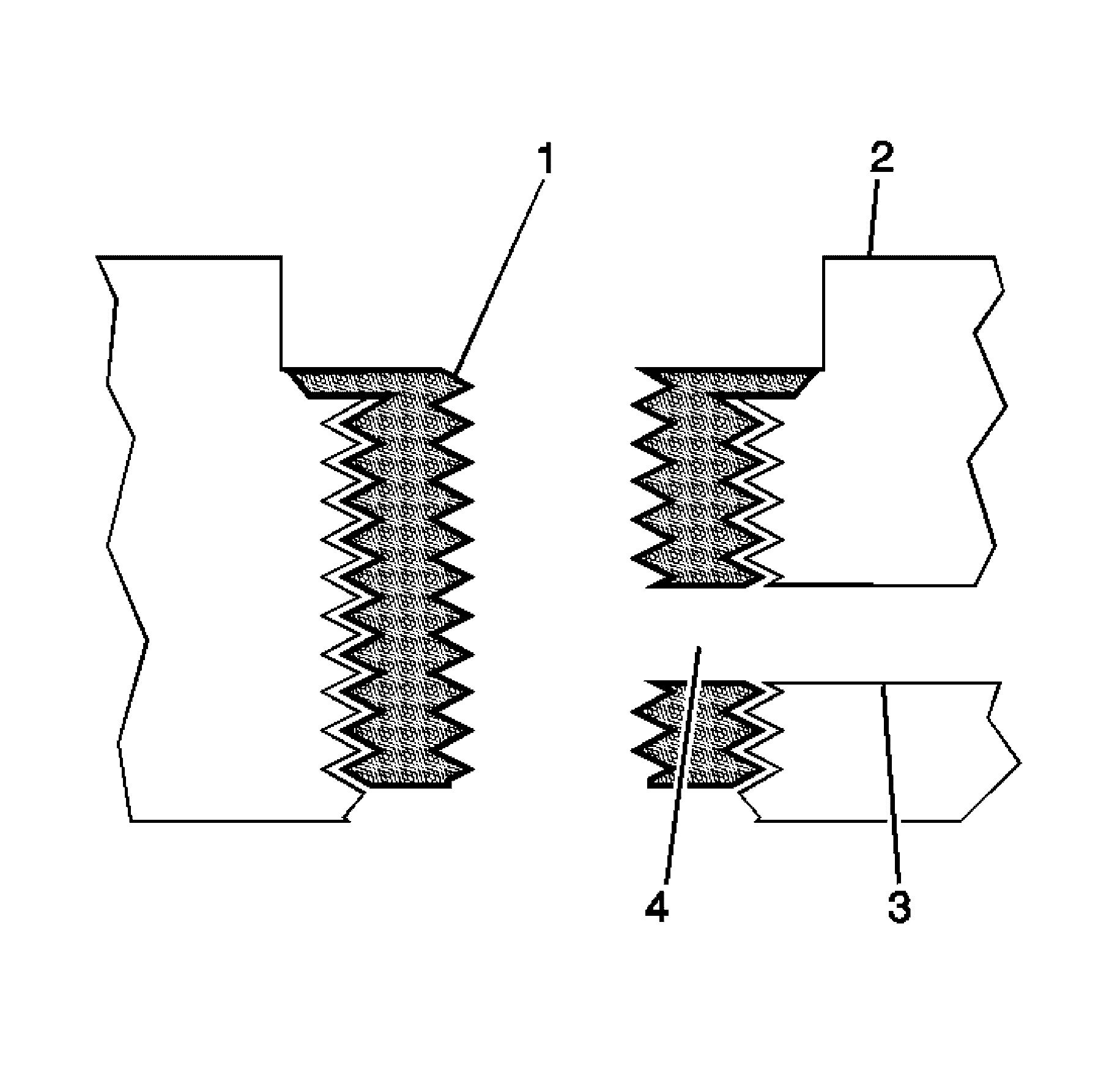
Tapered Pipe Thread Repair
The thread repair insert for tapered pipe threads is coated with a clear silver zinc coating.
- Drill out the threads of the damaged hole.
- Using compressed air, clean out any chips.
- Using a suitable tapping wrench, tap the threads of the drilled hole by hand only.
- Tap the drilled hole until the threads at the top of the tap (1) are down to the surface of the base material (2).
- Using compressed air, clean out any chips.
- Spray a commercially available thread cleaner into the tapped hole.
- Using compressed air, clean out any chips.
- Lubricate the threads of the driver installation tool (2) with the driver oil (1).
- Install the insert (2) onto the driver installation tool (1).
- Apply threadlock sealant LOCTITE 277® or equivalent (1) to the insert OD threads (2).
- Install the insert (1) into the tapped hole by hand only.
- Install the insert until the flange (1) of the insert contacts the surface of the base material.
- Continue to rotate the driver installation tool (1) until the top of the threaded section (2) is level with the top of the insert (3).
- Inspect the insert (1) for correct installation (2) into the tapped hole.
- Any installed insert that restricts or blocks an oil or engine coolant passage (3) will need to have the oil or engine coolant passage drilled out (4) to the original size of the oil or engine coolant passage. After drilling the restriction or blockage, clean out any chips and thread the installation driver tool through the insert again to remove any burrs caused by the drilling of the oil or engine coolant passage.

Important:
• During the drilling process, it is necessary to repeatedly remove the
drill and clean chips from the hole and the flutes of the drill. • Drill the hole until the stop collar contacts the surface of the base
material.

Important: All chips must be removed from the drilled hole prior to tapping.

Important:
• During the tapping process, it is necessary to repeatedly remove the tap
and clean chips from the hole and the flutes of the tap. • Make sure the tap has created full threads at least to the depth equal
to the insert length.
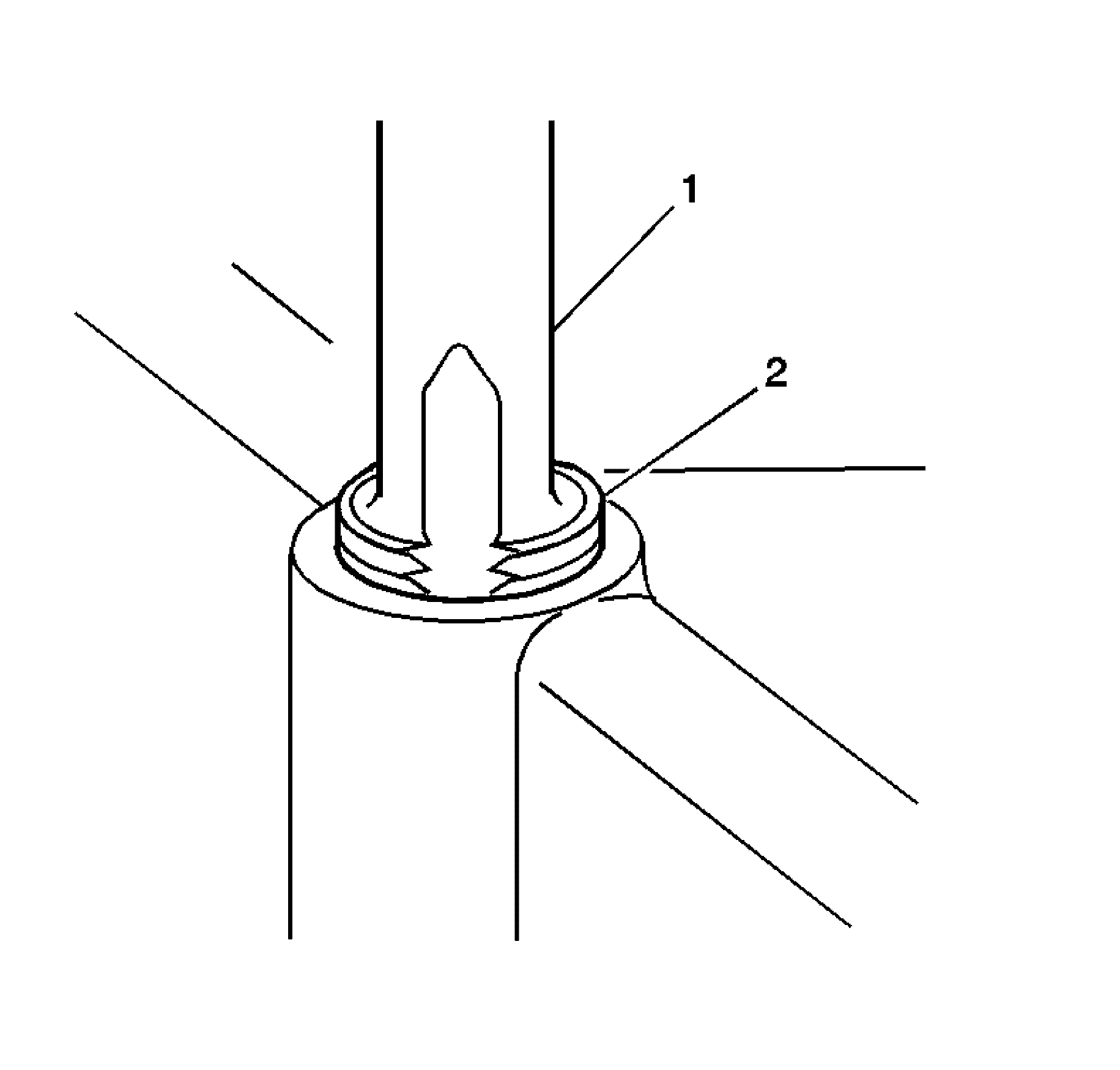

Important: All chips must be removed from the tapped hole prior to insert installation.


Important: All chips must be removed from the tapped hole prior to insert installation.

Important: Do not allow oil or other foreign material to contact the outside diameter (OD) of the insert.


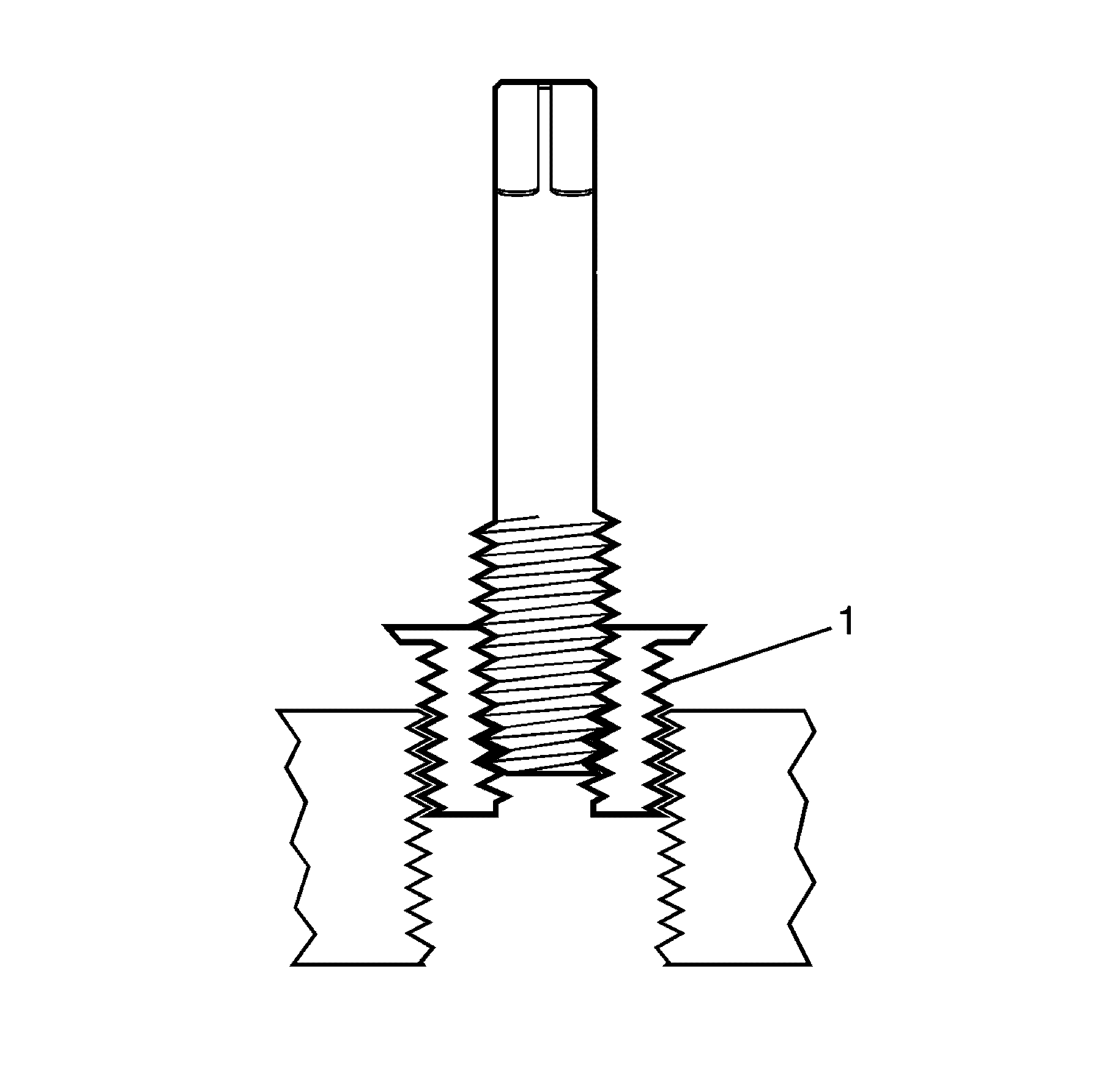

Important: If the insert will not thread down until the flange contacts the surface of the base material remove the insert immediately with a screw extracting tool and inspect the tapped hole for any remaining chips and/or incorrect tapping.
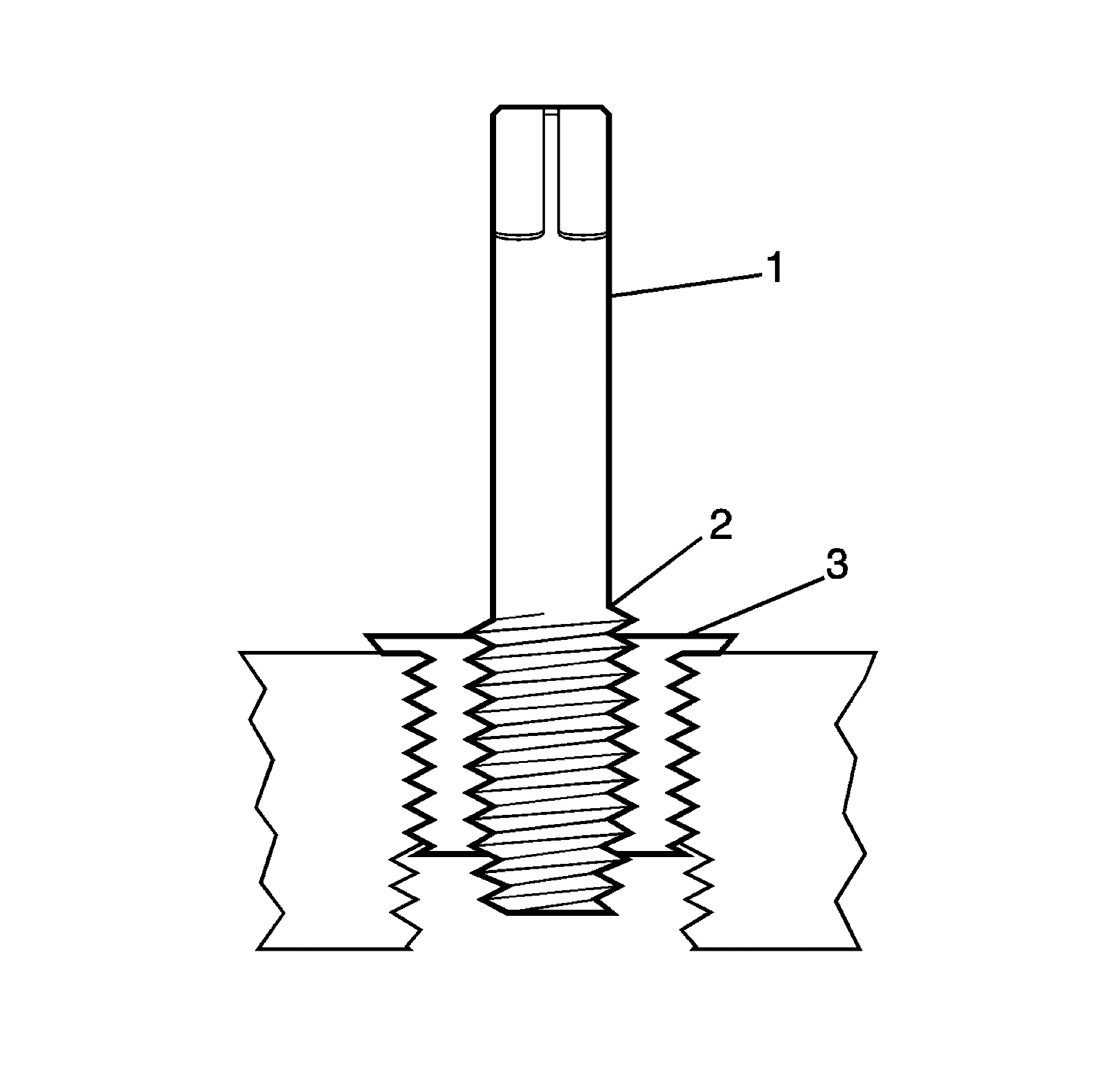
Important: The driver installation tool will tighten up before screwing completely through the insert. This is acceptable. The threads at the bottom of the insert are being formed and the insert is mechanically locking the insert into the base material threads.
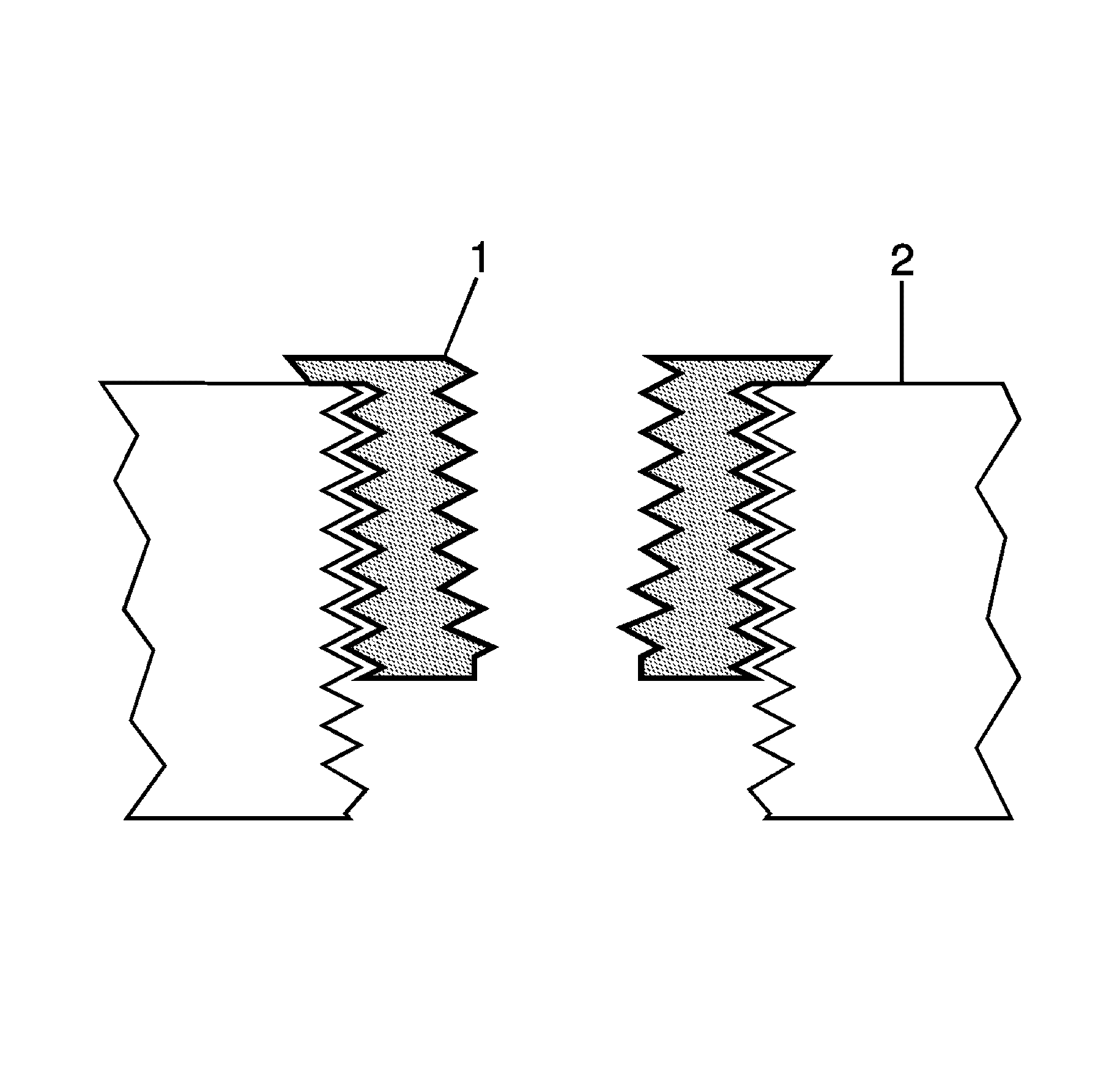
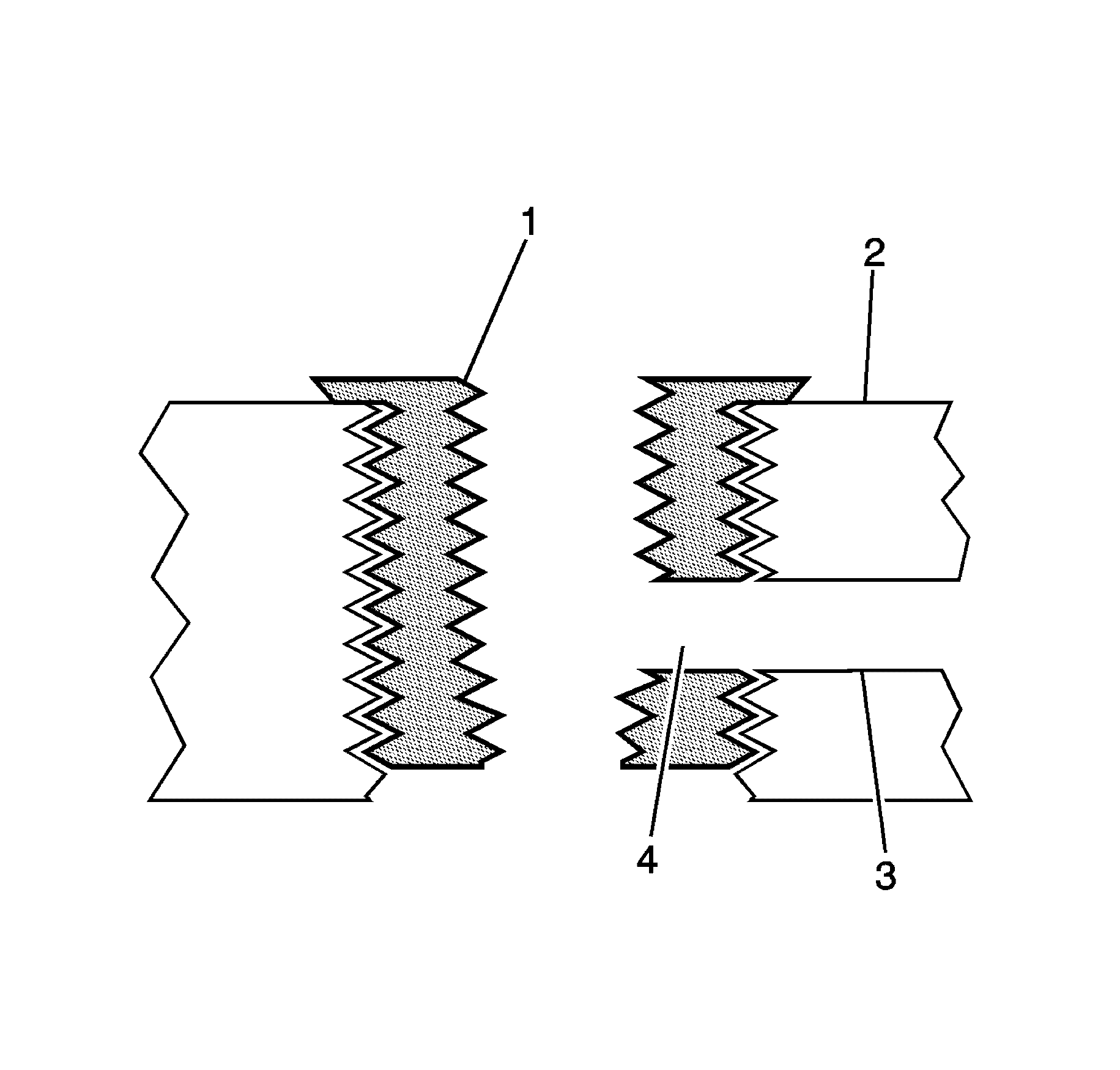
Cylinder Head Bolt Hole Thread Repair
- The cylinder head bolt hole thread repair kit consists of the following items:
- Install the fixture plate (3), bolts (1), and bushing (2) onto the engine block deck.
- Position the alignment pin (1) through the bushing and into the hole.
- With the alignment pin in the desired hole, tighten the fixture retaining bolts (2).
- Remove the alignment pin from the hole.
- Install the sleeve (2) onto the drill (1).
- Drill out the threads of the damaged hole.
- Using compressed air, clean out any chips.
- Using a tap wrench, tap the threads of the drilled hole.
- In order to tap the new threads to the correct depth, rotate the tap into the hole until the mark (1) on the tap aligns with the top of the drill bushing (3).
- Remove the fixture plate (2), bushing (3), and bolts.
- Using compressed air, clean out any chips.
- Spray a commercially available thread cleaner into the tapped hole.
- Using compressed air, clean out any chips.
- Lubricate the threads of the driver installation tool (2) with the driver oil (1).
- Install the insert (2) onto the driver installation tool (1).
- Apply threadlock sealant such as LOCTITE 277®; or equivalent (1) to the insert OD threads (2).
- Install the insert (1) into the tapped hole by hand only.
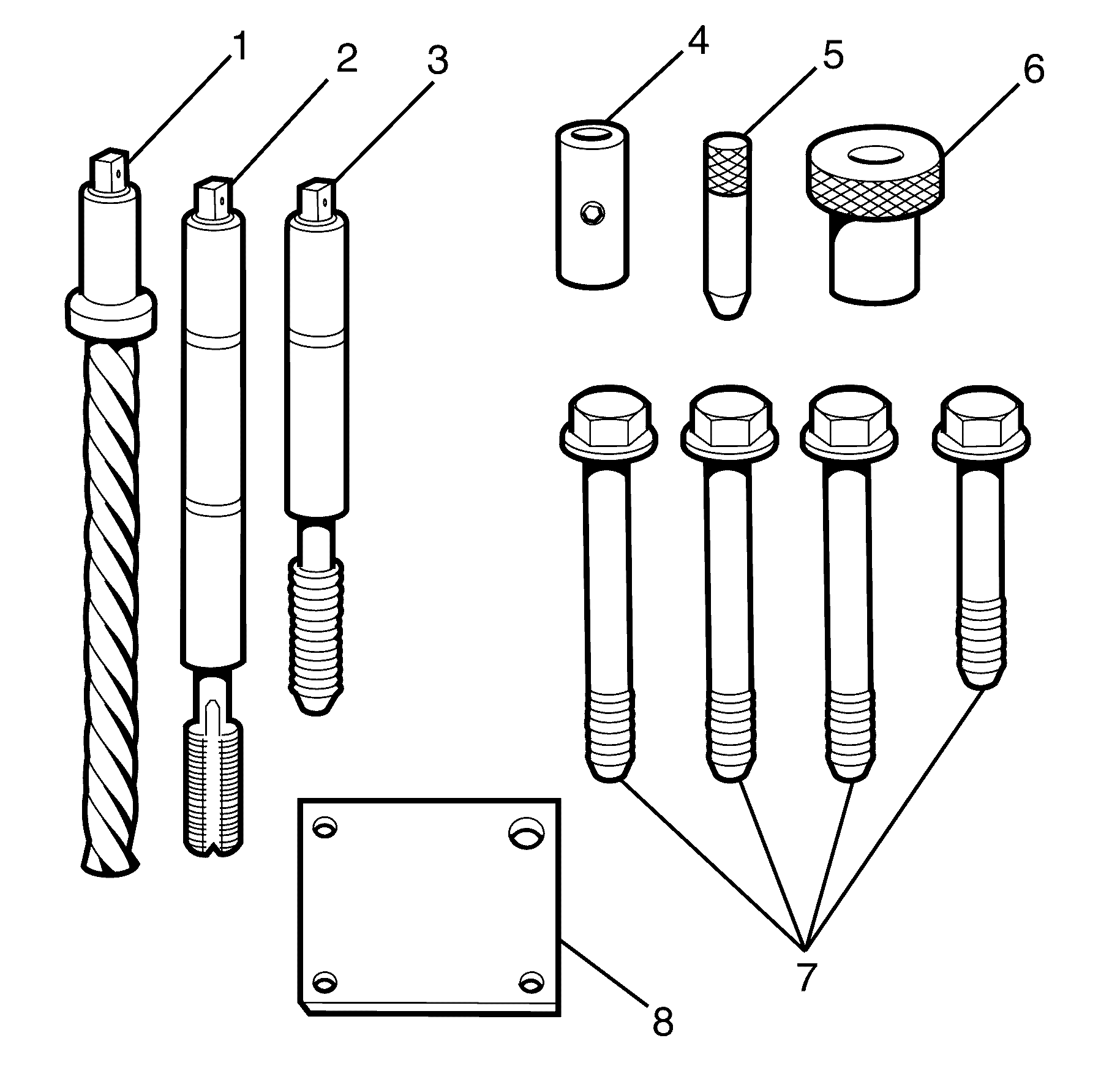
| • | The drill (1) |
| • | The tap (2) |
| • | The installer (3) |
| • | The sleeve (4) |
| • | The alignment pin (5) |
| • | The bushing (6) |
| • | The bolts (7) |
| • | The fixture plate (8) |
Caution: Refer to Safety Glasses Caution in the Preface section.
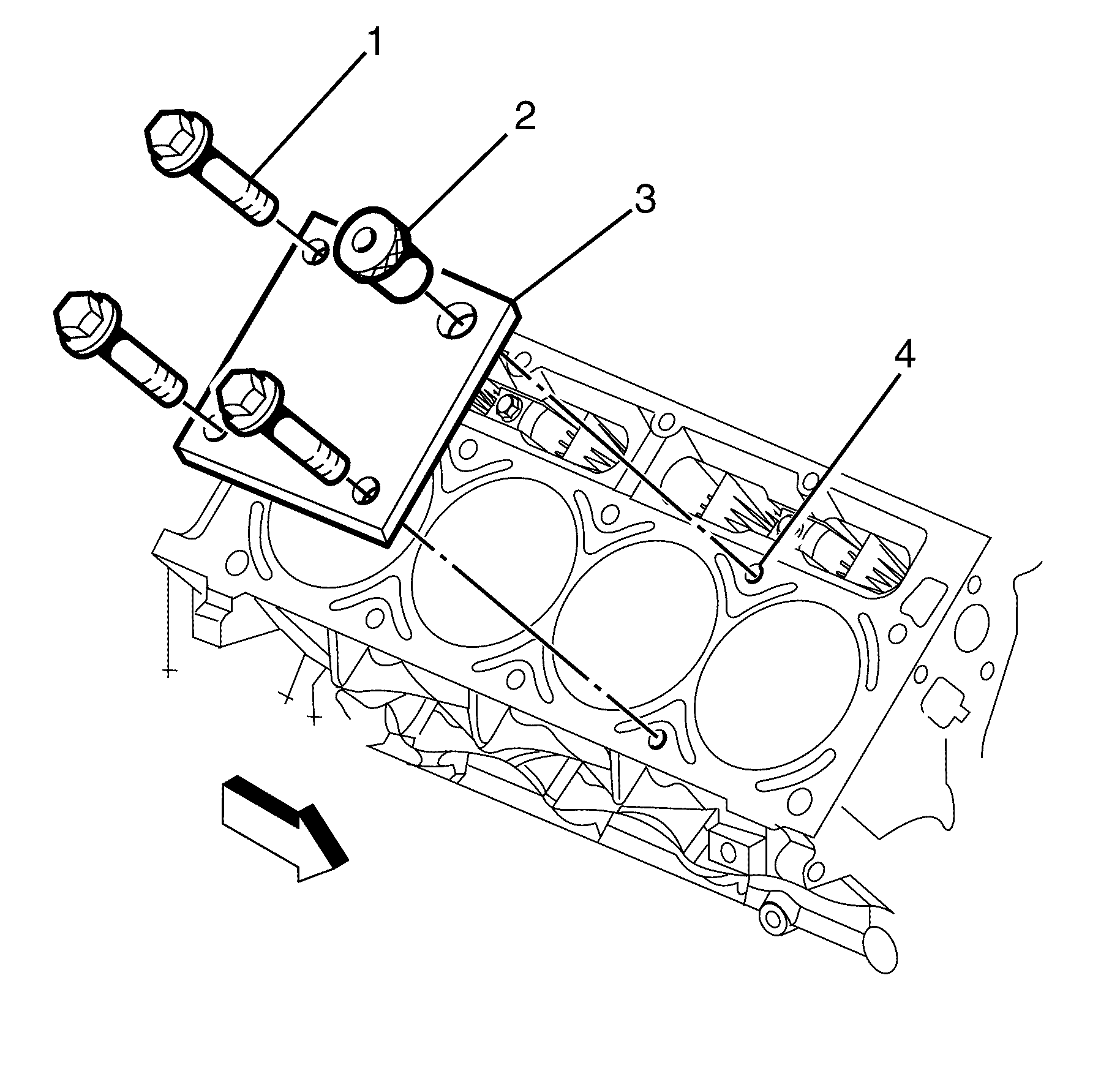
Important:
• The use of a cutting type fluid WD 40®, or equivalent, is recommended
when performing the drilling and tapping procedures. • Driver oil MUST be used on the installer driver tool. • The tool kits are designed for use with either a suitable tap wrench or
drill motor.
Position the fixture plate and bushing over the hole that is to be repaired (4).
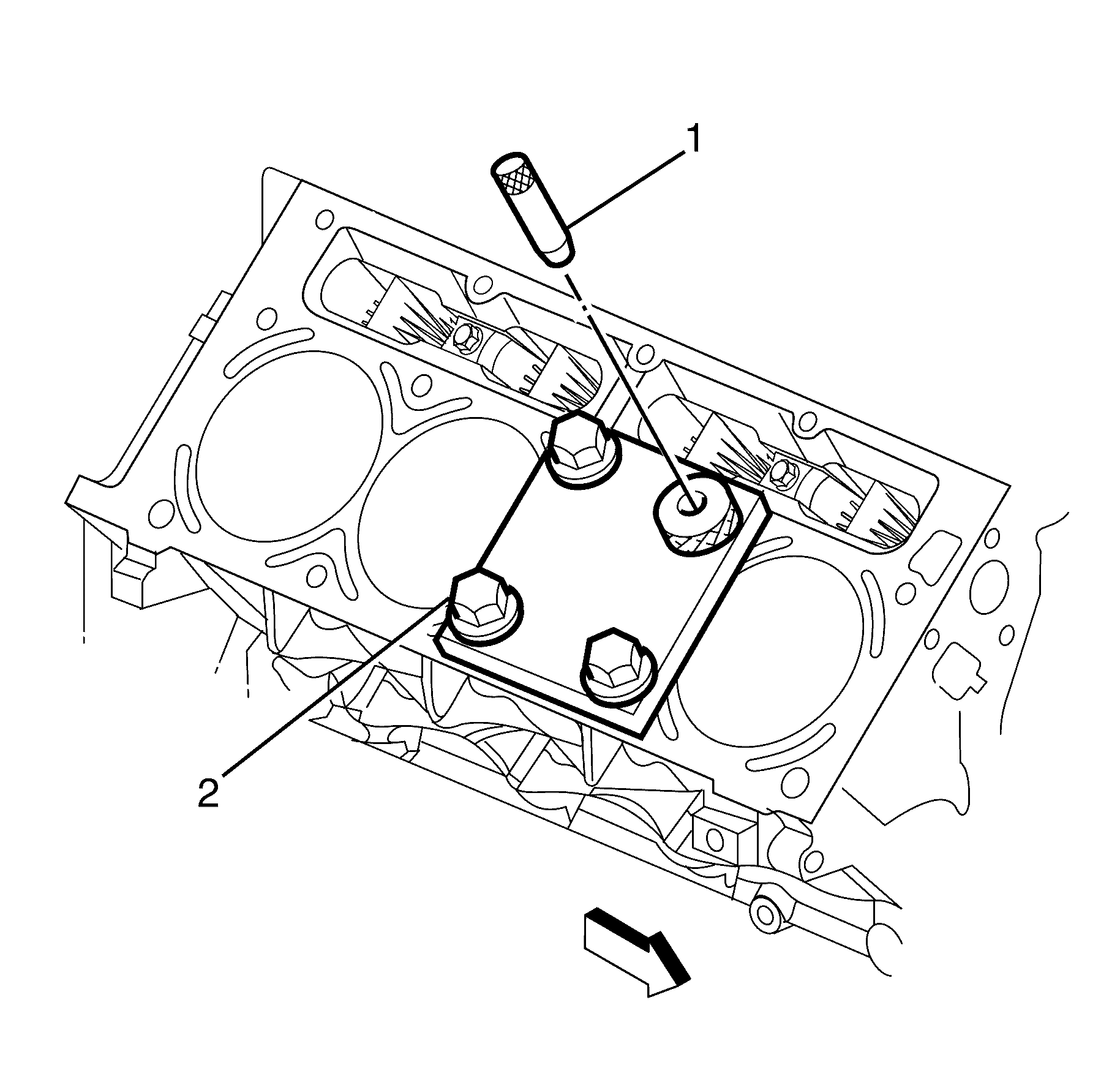
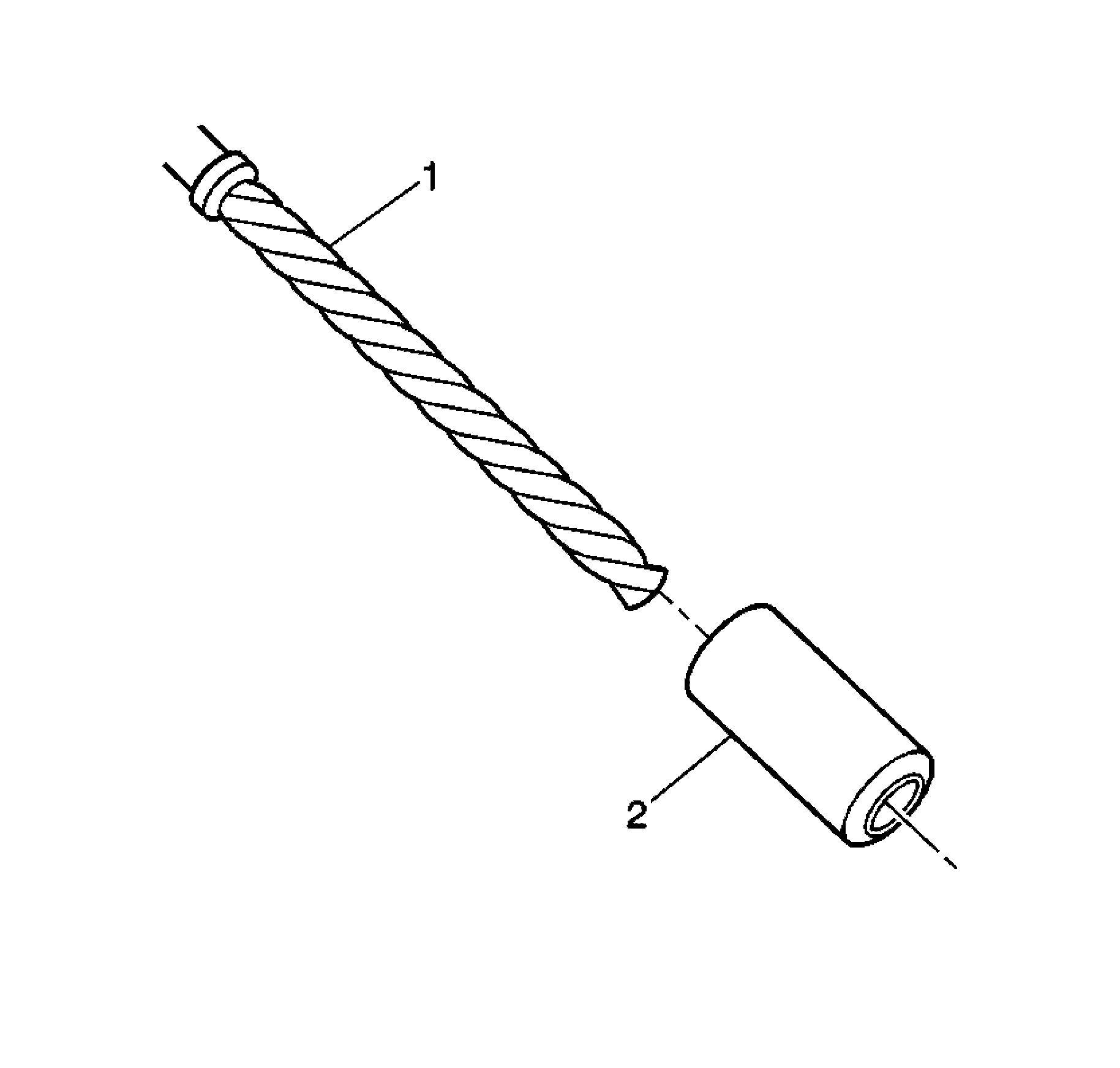
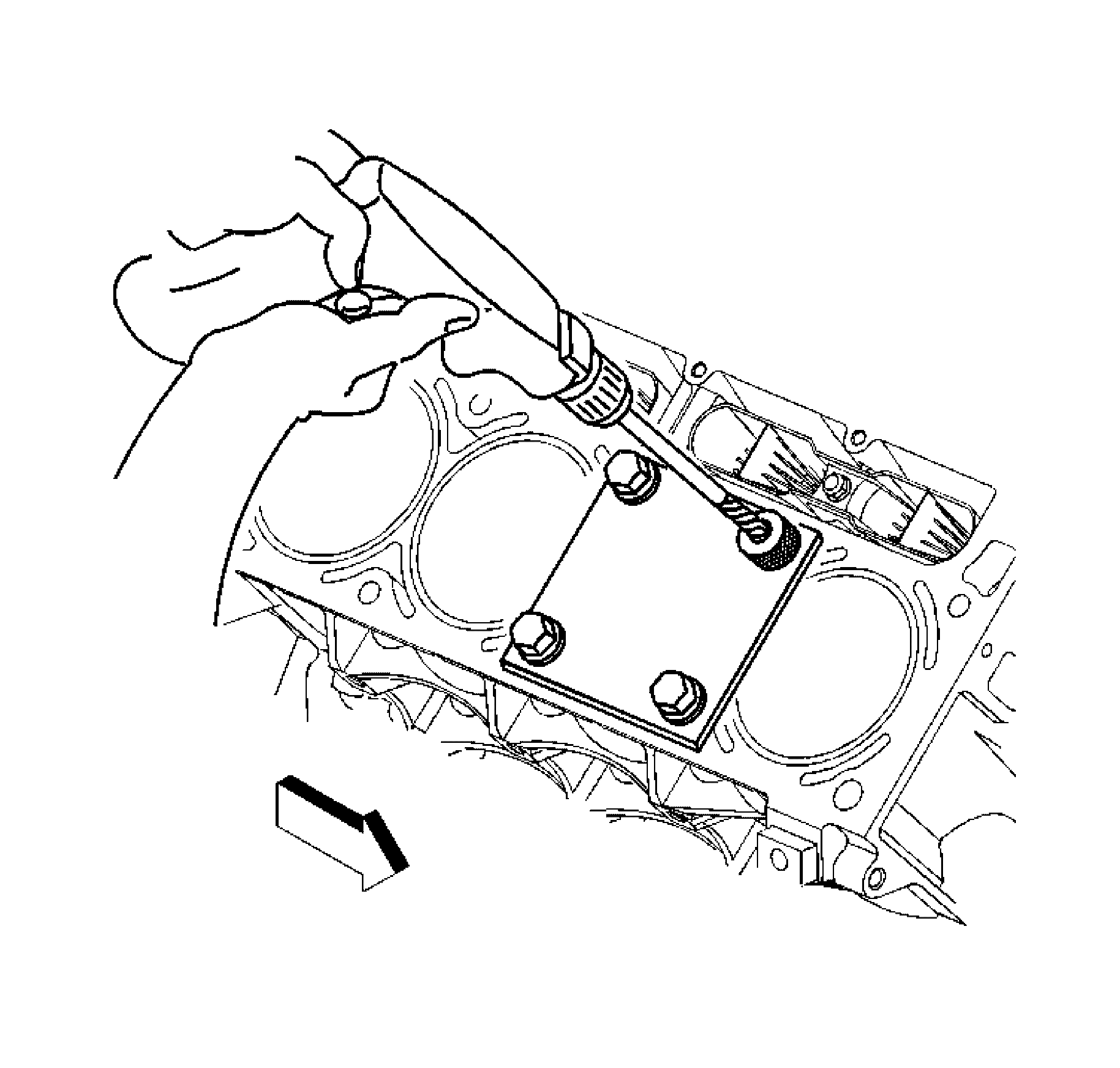
Important: During the reaming process, it is necessary to repeatedly remove the drill and clean the chips from the hole.
Drill the hole until the stop collar of the drill bit or the sleeve contacts the bushing.
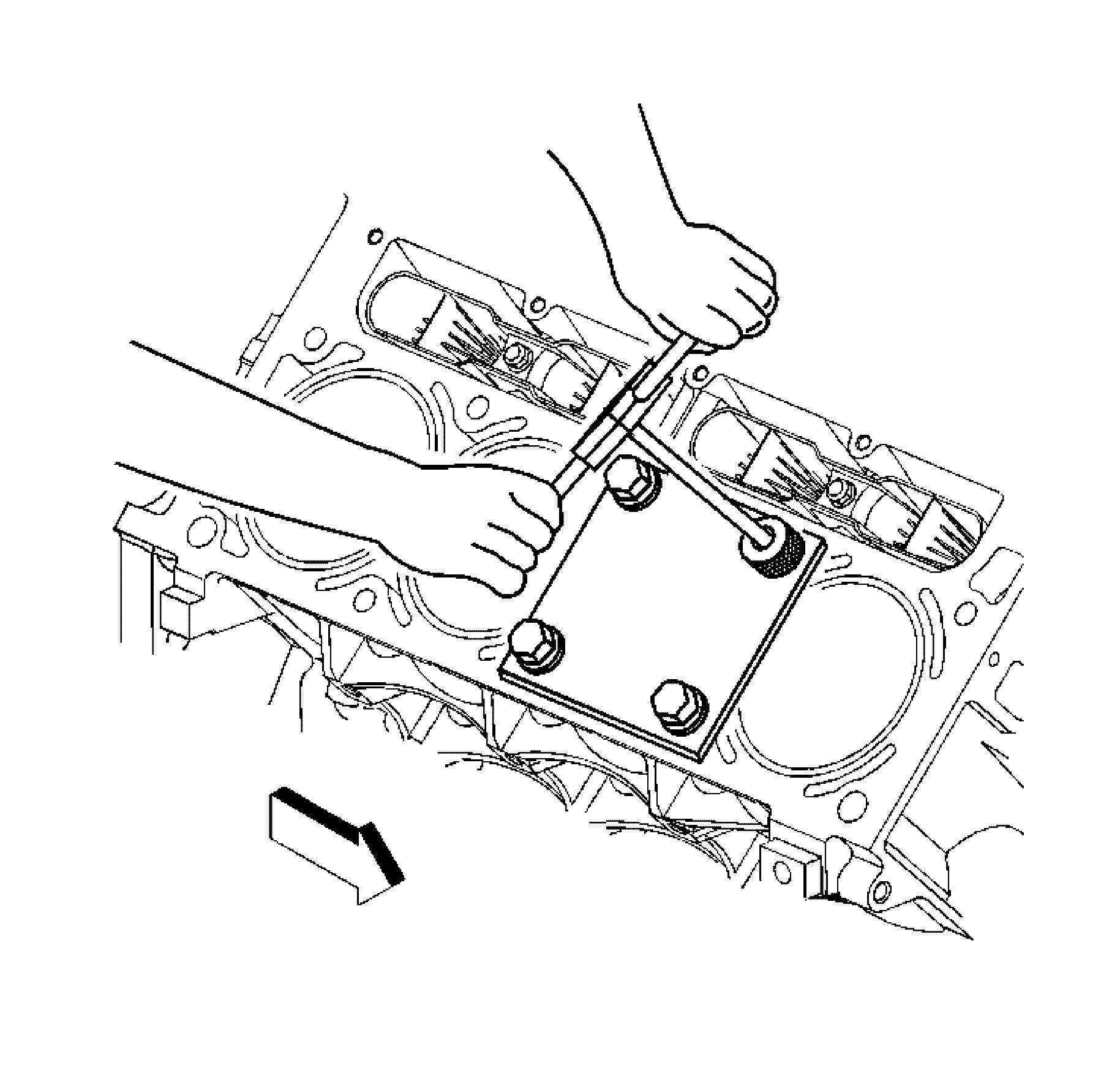
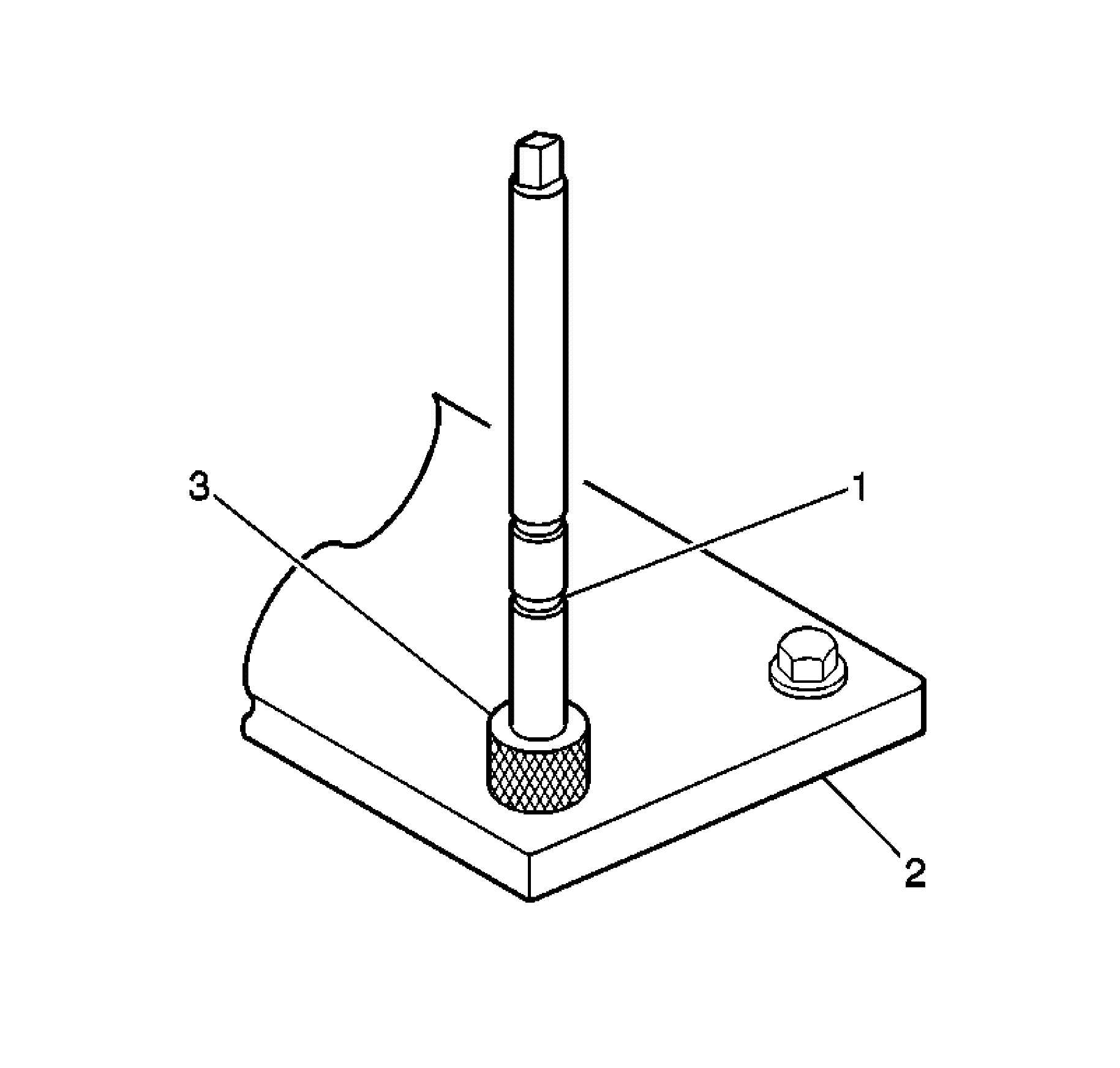

Important: All chips must be removed from the tapped hole prior to insert installation.


Important: All chips must be removed from the tapped hole prior to insert installation.

Important: Do not allow oil or other foreign material to contact the outside diameter (OD) of the insert.



Install the insert until the flange of the insert contacts the counterbored surface. Continue to rotate the installer tool (1) through the insert.
The installer tool will tighten up before screwing completely through the insert. This is acceptable. You are forming the bottom threads of the insert and mechanically locking the insert to the base material threads.
Main Cap Bolt Hole Thread Repair
- The main cap bolt hole thread repair kit consists of the following items:
- Install the fixture plate, bolt, and bushing onto the engine block.
- Position the alignment pin in the desired hole and tighten the fixture retaining bolts.
- Drill out the damaged hole.
- Using compressed air, clean out any chips.
- Using a tap wrench, tap the threads of the drilled hole.
- Using compressed air, clean out any chips.
- Spray a commercially available thread cleaner into the tapped hole.
- Using compressed air, clean out any chips.
- Lubricate the threads of the driver installation tool (2) with the driver oil (1).
- Install the insert (2) onto the driver installation tool (1).
- Apply threadlock sealant LOCTITE 277® or equivalent (1) to the insert OD threads (2).
- Install the insert and driver (1) through the fixture plate and bushing and into the hole.
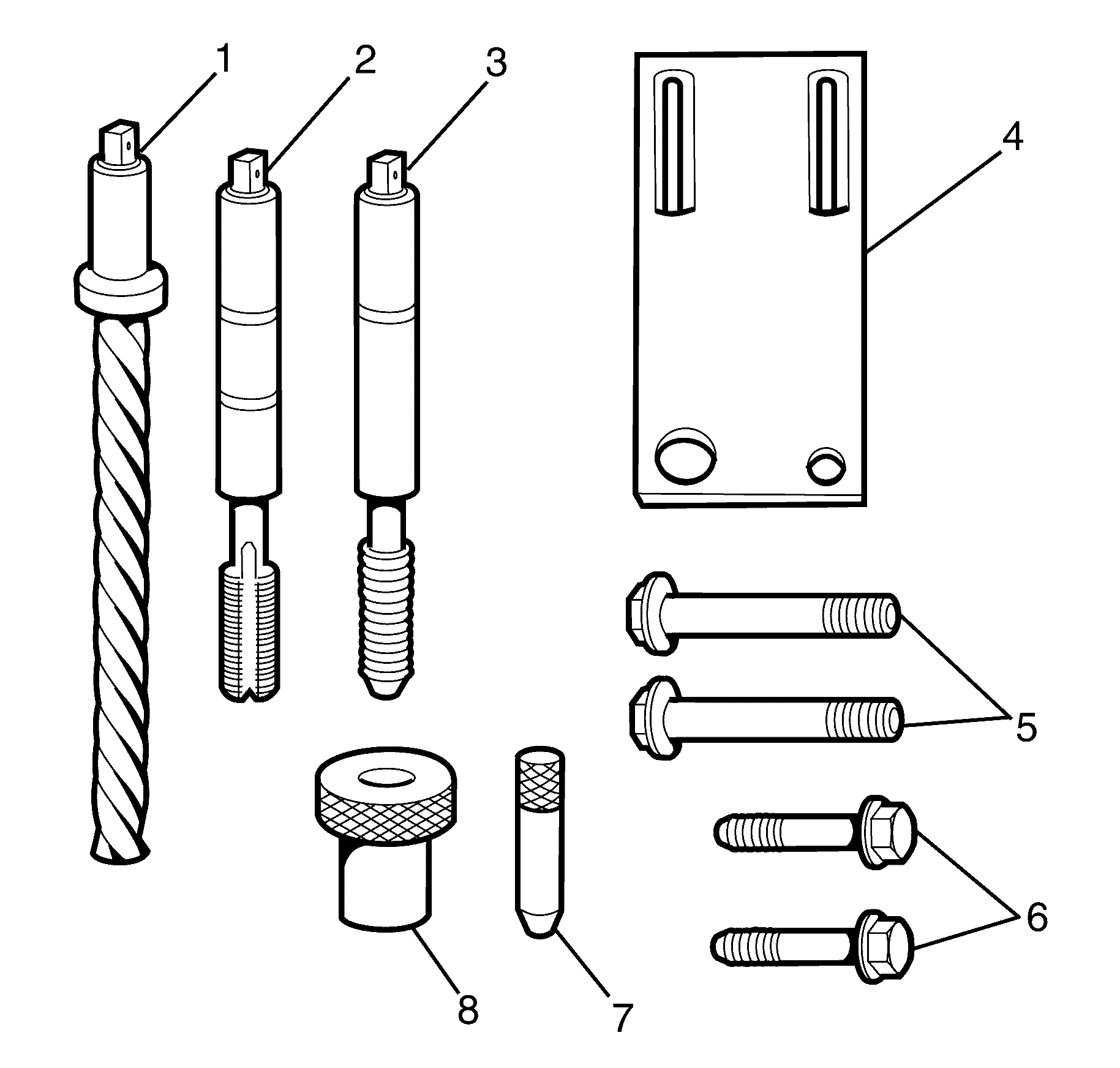
| • | The drill (1) |
| • | The tap (2) |
| • | The installer (3) |
| • | The fixture plate (4) |
| • | The long bolts (5) |
| • | The short bolts (6) |
| • | The alignment pin (7) |
| • | The bushing (8) |
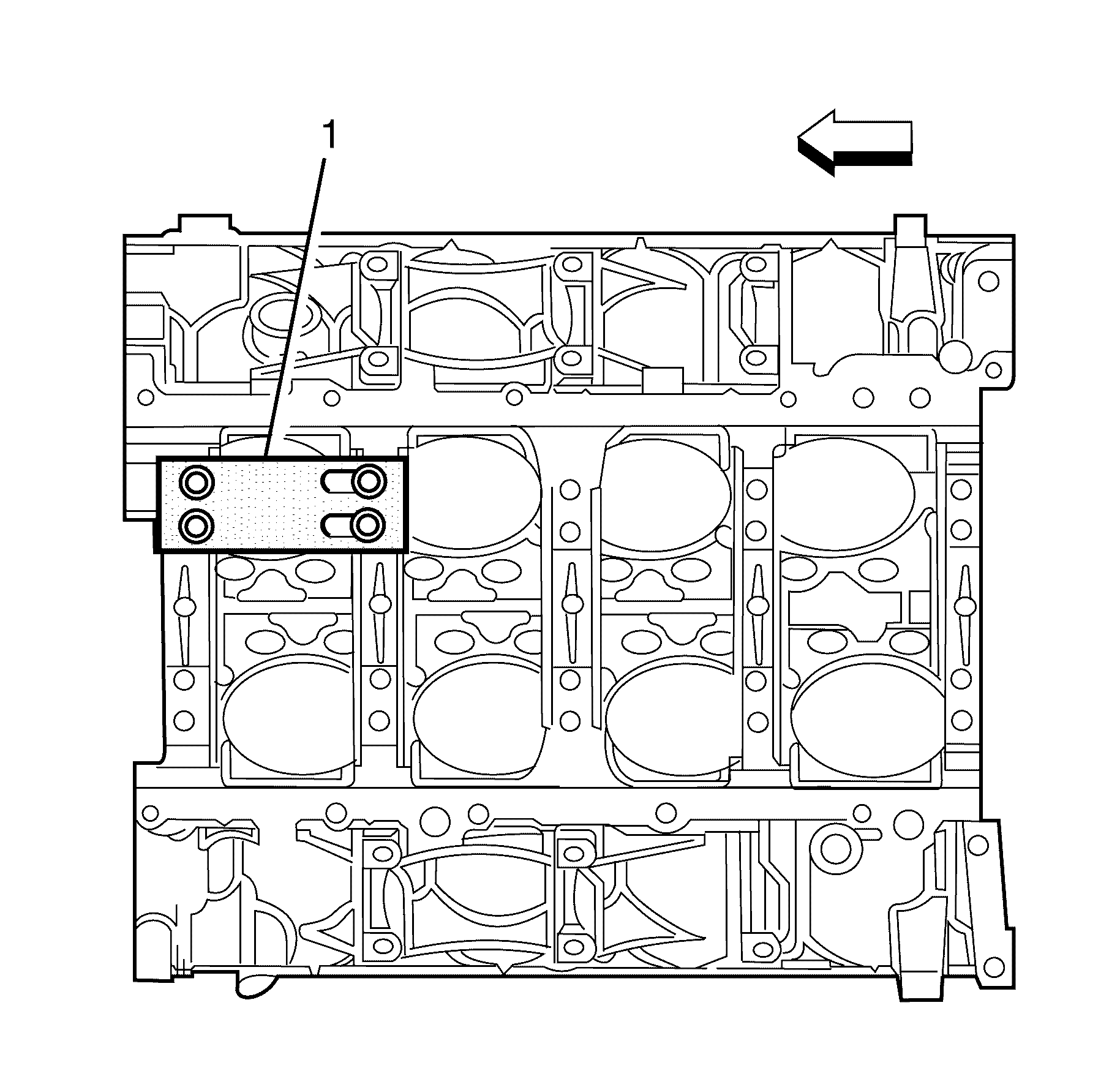
Position the fixture plate and bushing over the hole that is to be repaired.
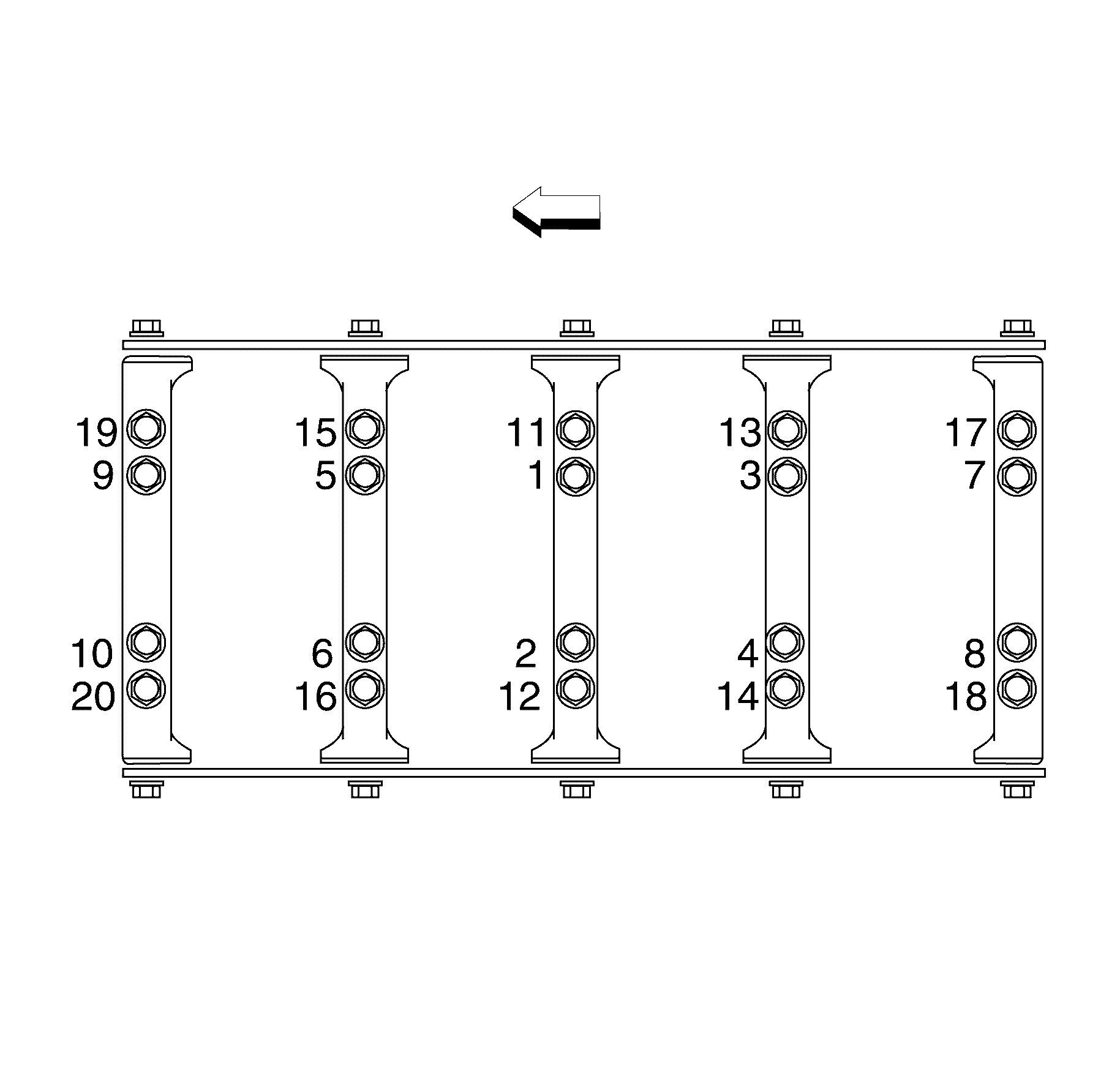
The outer bolt hole locations 11-20 have the shallower counterbores. Use sleeve J 42385-316 with the drill.
Drill until the stop collar of the drill bit or the sleeve contacts the bushing.
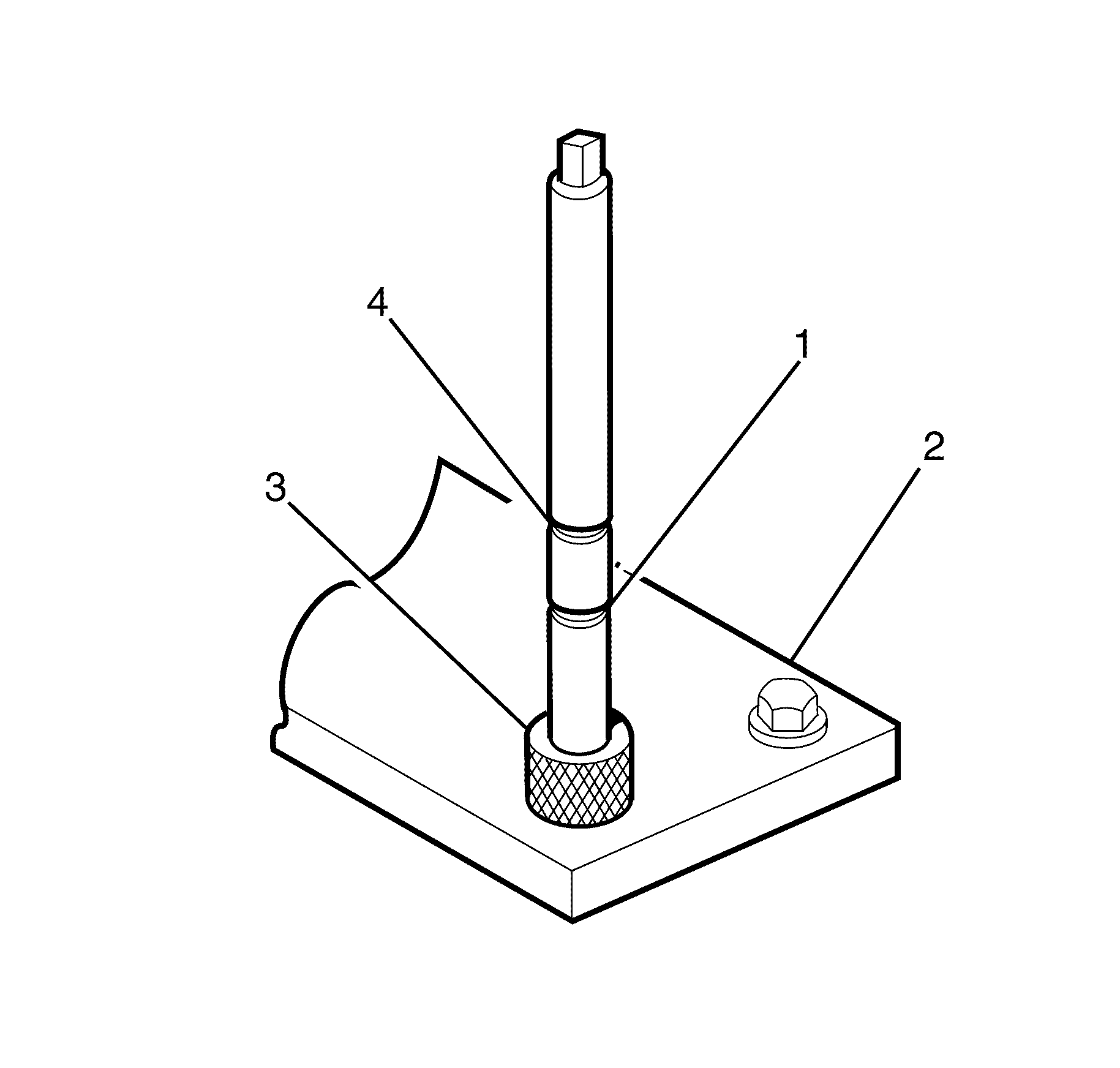
In order to tap the new threads to the correct depth, rotate the tap into the hole until the mark on the tap aligns with the top of the bushing.
For the deeper main cap holes 1-10, rotate the tap until the upper mark (4) on the tap aligns with the top of the bushing (3).
For the shallower main cap holes 11-20, rotate the tap until the lower mark (1) on the tap aligns with top of the bushing (3).

Important: All chips must be removed from the tapped hole prior to insert installation.


Important: All chips must be removed from the tapped hole prior to insert installation.

Important: Do not allow oil or other foreign material to contact the outside diameter (OD) of the insert.


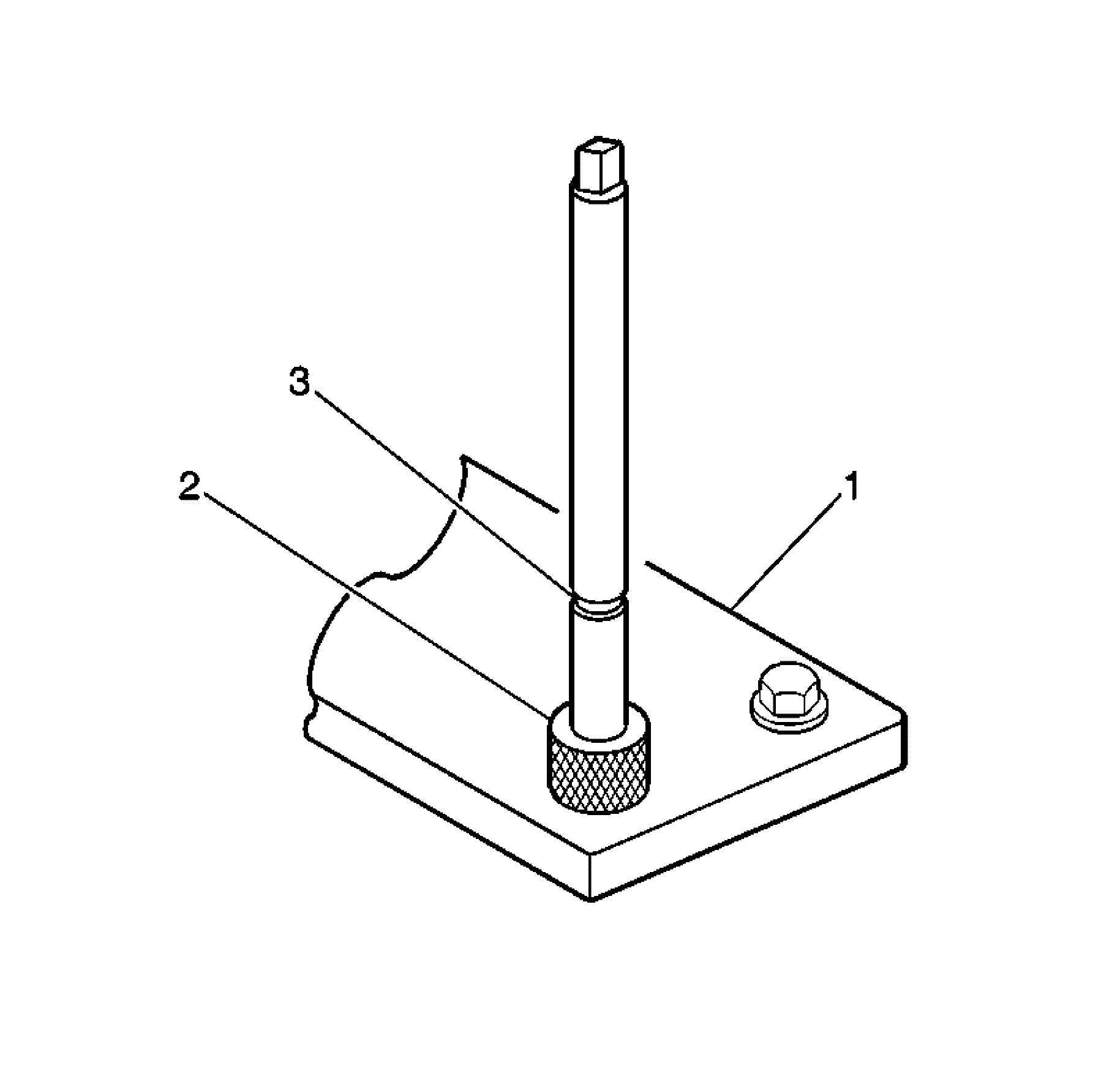
Important: The fixture plate and bushing remains installed onto the engine block during the insert installation procedure.
Rotate the driver tool until the mark on the tool (3) aligns with the top of the bushing (2).
The installer tool will tighten up before screwing completely through the insert. This is acceptable. You are forming the bottom threads of the insert and mechanically locking the insert to the base material threads.
